Asian landscaping offers a harmonious blend of natural elements, spiritual symbolism, and thoughtful design that transforms outdoor spaces into tranquil sanctuaries. Rooted in centuries-old traditions from Japan, China, and Korea, these design principles emphasize balance, simplicity, and the careful integration of water, stone, plants, and architectural features. From serene zen gardens with raked gravel to vibrant koi ponds surrounded by bamboo groves, Asian landscaping creates spaces that promote meditation, relaxation, and connection with nature. These timeless design concepts can be adapted to any space, whether you have a sprawling backyard or a compact urban garden, bringing peaceful elegance and cultural richness to your outdoor environment.
1. Asian Landscaping Zen Dry Rock Garden Design

Creating a traditional karesansui brings profound tranquility to any outdoor space through minimalist design principles. This Japanese rock garden style features carefully arranged stones surrounded by raked gravel or sand patterns that symbolize water and natural landscapes. The emphasis on abstract concepts is intended to spur the imagination and allow the mind to wander, a crucial part of the meditative process. Position large focal stones asymmetrically to represent mountains or islands, then rake fine gravel around them in flowing patterns that suggest rippling water or gentle streams. Use a fine-toothed metal rake to smooth the gravel, then a specially designed, wide-toothed rake to draw the pattern. This low-maintenance design requires minimal plantings, instead relying on the contemplative beauty of stone and sand to create a space for quiet reflection and spiritual contemplation.
2. Asian Landscaping Bamboo Privacy Screen Installation
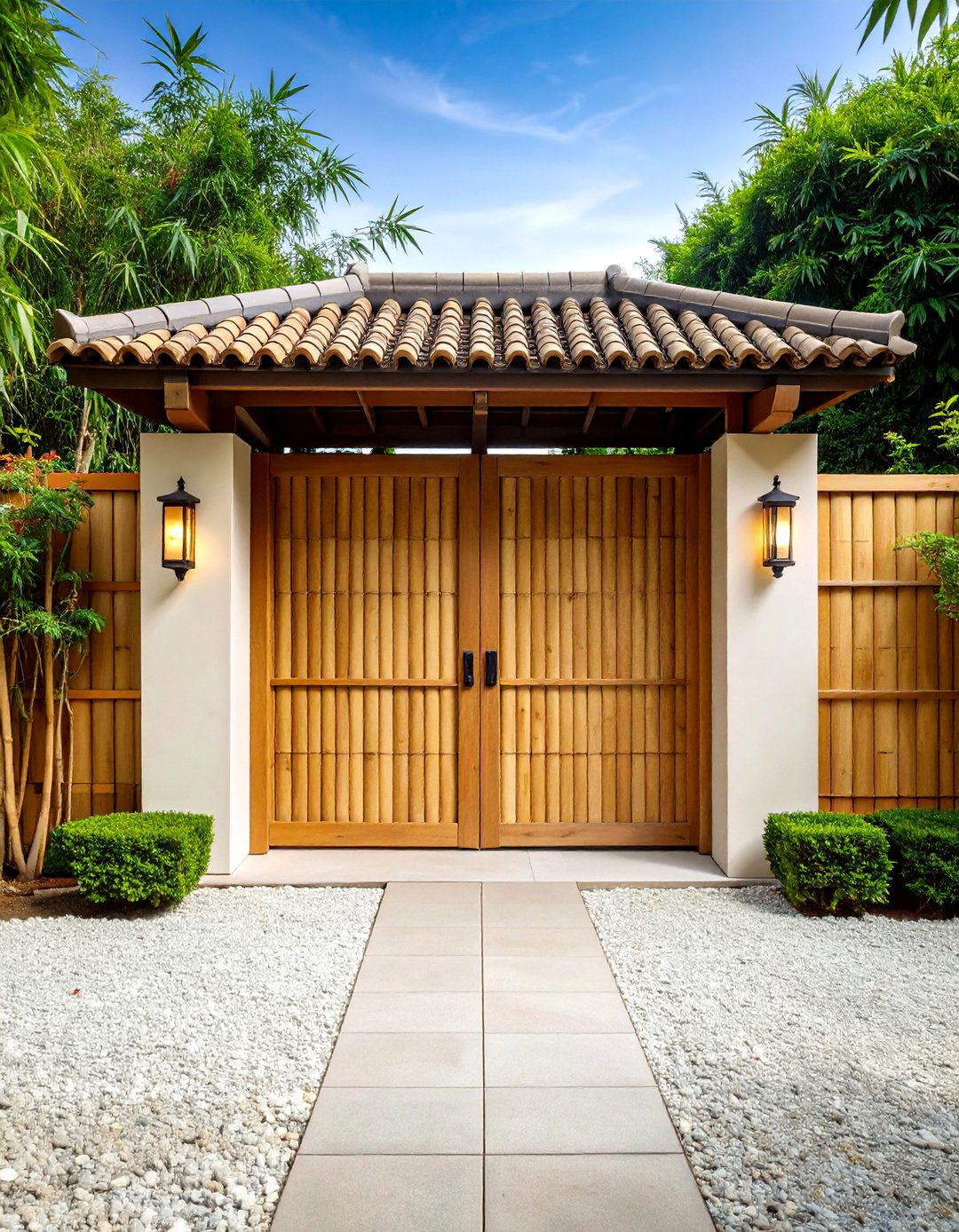
Bamboo screens provide an elegant solution for creating privacy while maintaining the authentic aesthetic of Asian garden design. With bamboo, privacy and style come naturally as this fast-growing plant creates graceful, airy barriers that allow light to filter through while maintaining seclusion. Phyllostachys Bissetii tolerates adverse growing conditions including cold temperatures, windy conditions, salt sprays and poor soils, making it exceptionally versatile for various climates. Install bamboo containment barriers to control spreading and maintain your desired garden shape. Use a simple bamboo fence to block views of the world outside your garden and make the entrance clear with a gate and attractive arbor. The gentle rustling of bamboo leaves creates a soothing soundscape that enhances the meditative quality of your Asian landscaping while providing year-round screening that grows denser with time.
3. Asian Landscaping Koi Pond Water Feature Design
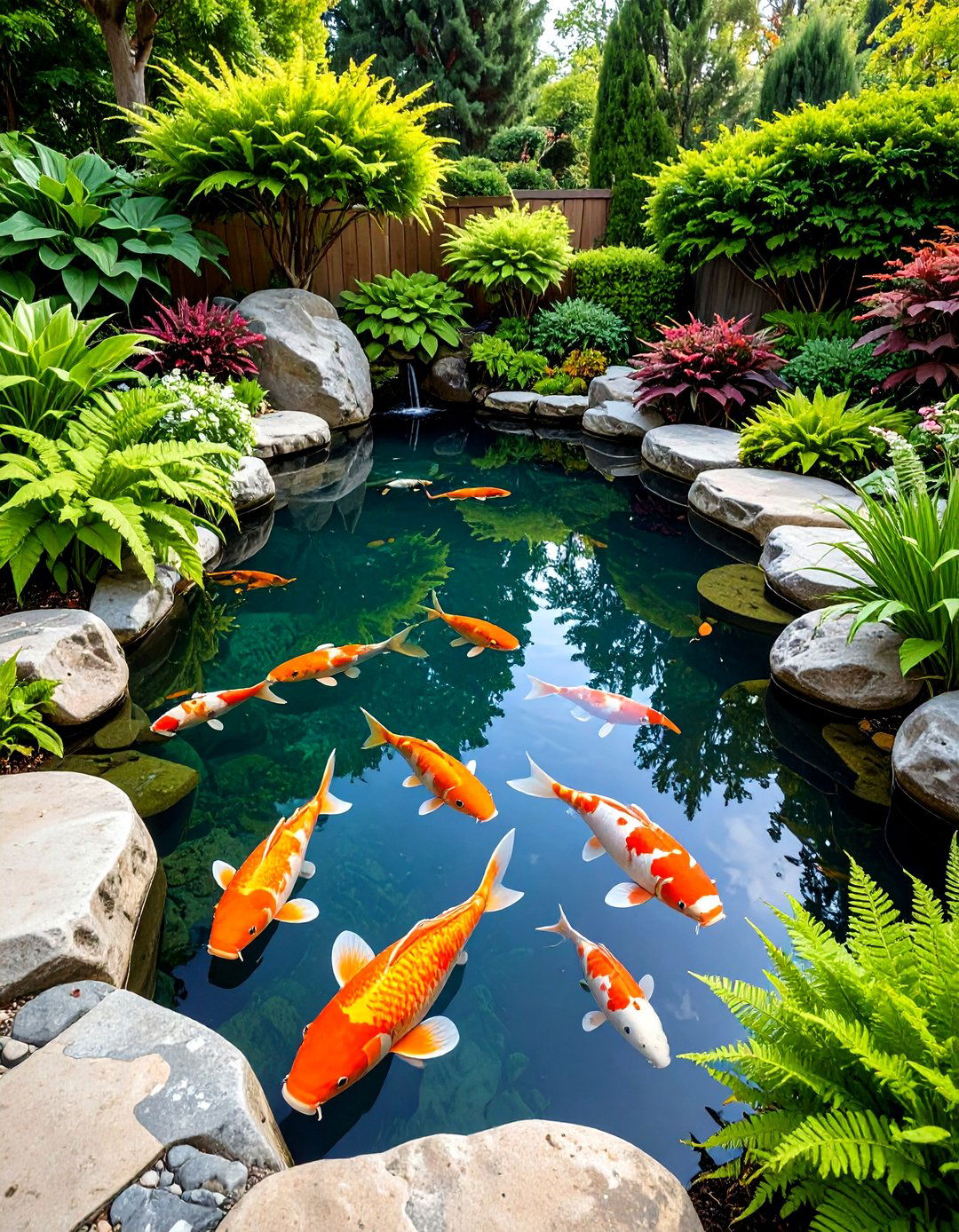
Incorporating a koi pond serves as the centerpiece of authentic Asian landscaping, bringing movement, color, and life to your garden sanctuary. A colorful goldfish or koi pond brings hours of enjoyment to Japanese garden design, with goldfish being hardier than koi, though both types may need to be overwintered indoors in cold climates. Design your pond with irregular, natural shapes rather than geometric forms to maintain the organic aesthetic central to Asian design principles. Home to more than 1200 koi fish, turtles, birds, and other wildlife, these ponds help maintain the Japanese Garden's tranquil ambiance. Surround the pond with carefully placed stones, ornamental grasses, and shade-loving plants like hostas or ferns. The magnetism of these "living jewels" creates joy for visitors as they shine against overcast skies, becoming the single greatest generator of delight in the garden.
4. Asian Landscaping Stone Lantern Placement Strategy
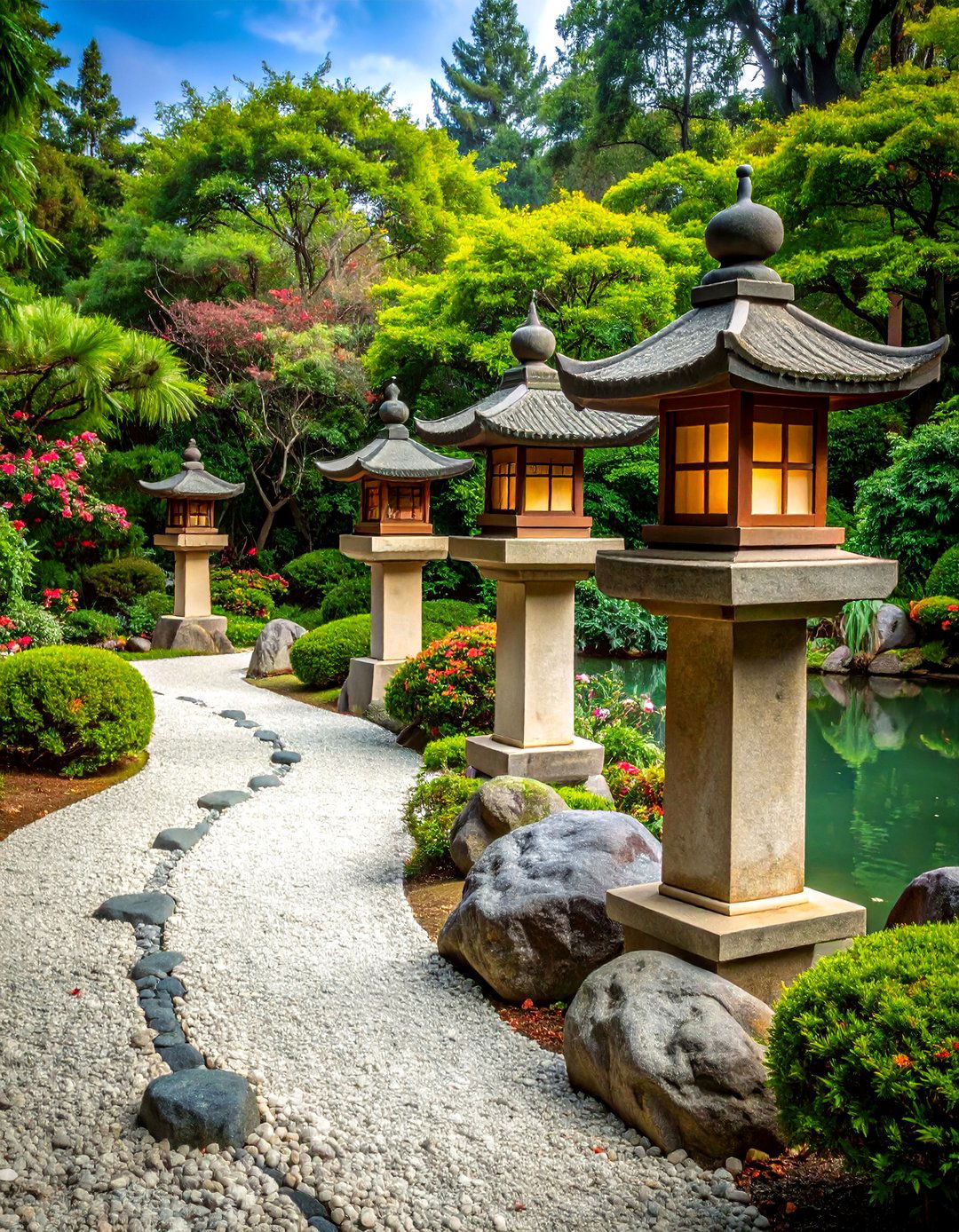
Strategic placement of stone lanterns adds both functional lighting and symbolic meaning to your Asian landscaping design. In Muromachi/Momoyama period (1336 – 1600), the lantern became popular in tea gardens/pathways leading to the teahouse as a functional element to brighten difficult parts of the paths. These features hold deep religious, spiritual and philosophical symbolism, and are considered the guardians of the garden, representing brightness, spiritual enlightenment, and protection from evil. Position lanterns along pathways to guide visitors through your garden, near water features for reflection, or as focal points in meditation areas. Stone lanterns shaped as pagodas work well to bring character without taking up a ton of space. Choose from various traditional styles including Kasuga, yukimi, or pagoda forms, ensuring they complement rather than overwhelm your landscape's natural elements. When the garden was large, the interest of guests should be awakened by using many different styles of lanterns.
5. Asian Landscaping Japanese Maple Tree Focal Points
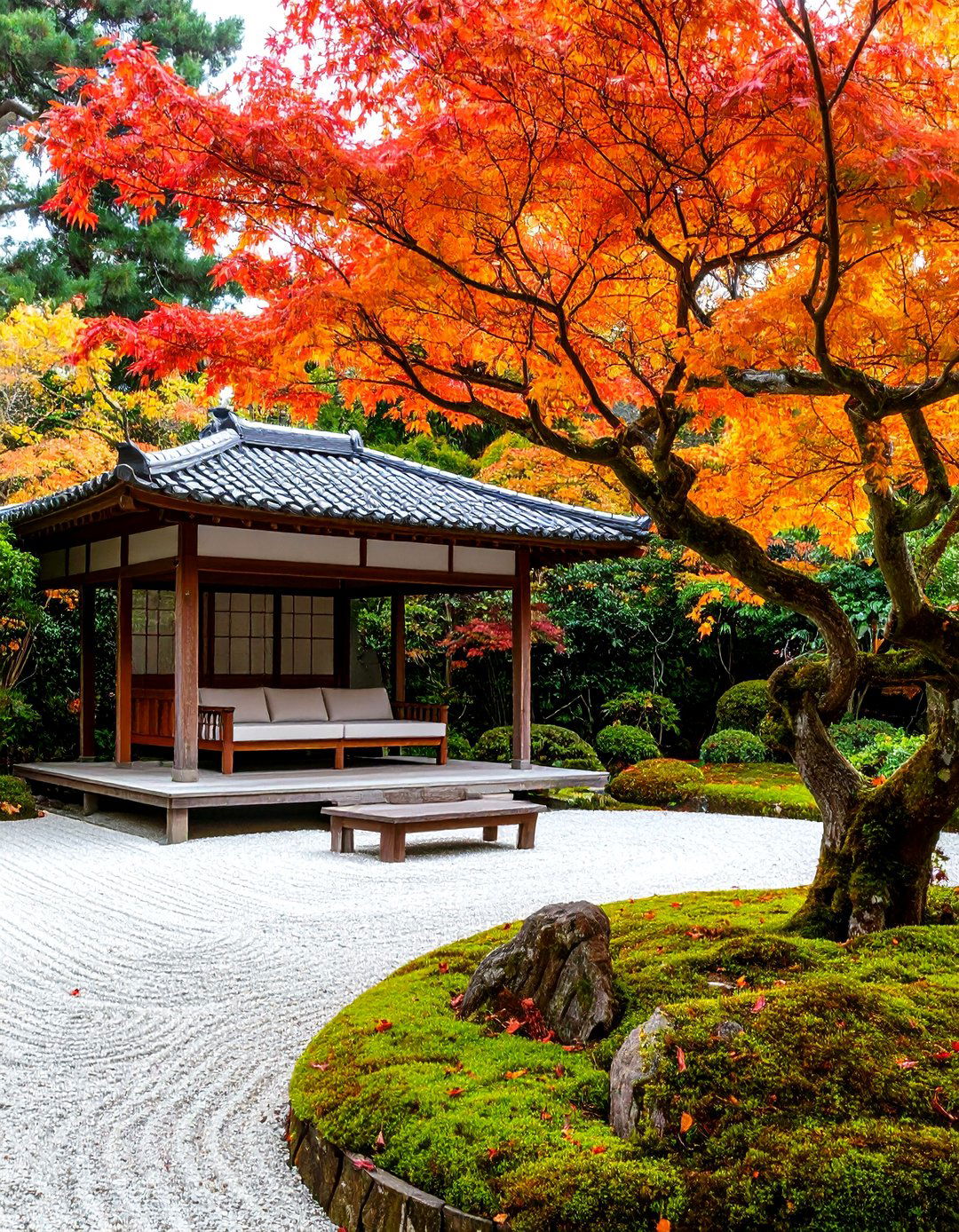
Japanese maple trees provide stunning seasonal interest and serve as magnificent centerpieces in Asian landscaping designs throughout the year. Precisely because of its spectacular colors and attractive silhouette, the Japanese maple is a common choice for Asian landscape design, with casually spread red splashes contrasting dynamically with bright greens. Trees in Japanese garden design are usually pruned into shapes that reveal their architectural form, emphasizing their natural beauty through careful maintenance. Plant Japanese maples as specimen trees where their graceful branching patterns and vibrant foliage can be fully appreciated from multiple viewpoints. With proper Japanese Maple care, you'll enjoy vibrant reds in autumn and lush greens in spring. Position them near seating areas, along pathways, or as backdrops for stone arrangements where their seasonal transformations become living artwork that anchors your garden's design throughout changing seasons.
6. Asian Landscaping Moss Garden Groundcover Design
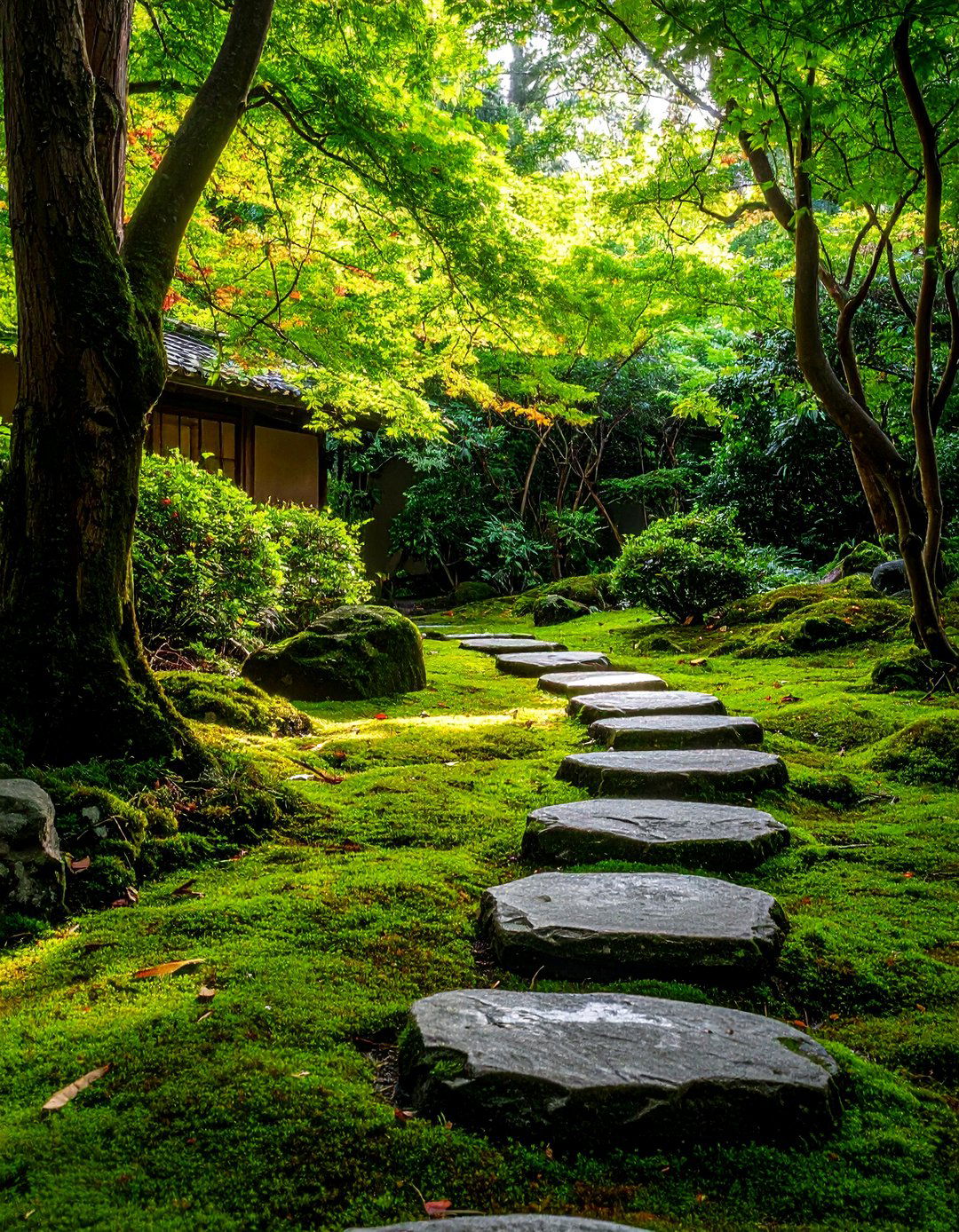
Moss gardens create a serene, carpet-like foundation that embodies the gentle, natural aesthetic central to Asian landscaping philosophy. Moss makes a serene-looking groundcover in moist, shady areas, though it doesn't tolerate foot traffic well, requiring stepping stone walkways for passage without damaging its soft surface. The essential elements in a Japanese Zen Garden include gravel, stones and in some cases moss, creating gardens designed to be felt not seen. Establish moss in areas with consistent moisture and filtered light, often beneath tree canopies or alongside water features. Tea gardens are typically embellished with stone lanterns, mossy ground covers, and neatly manicured plants. Create pathways using flat stones or wooden boards to protect the delicate moss while allowing access for maintenance. The velvety texture and various shades of green moss provide year-round interest and require minimal maintenance once established in appropriate conditions.
7. Asian Landscaping Tea Garden Retreat Design
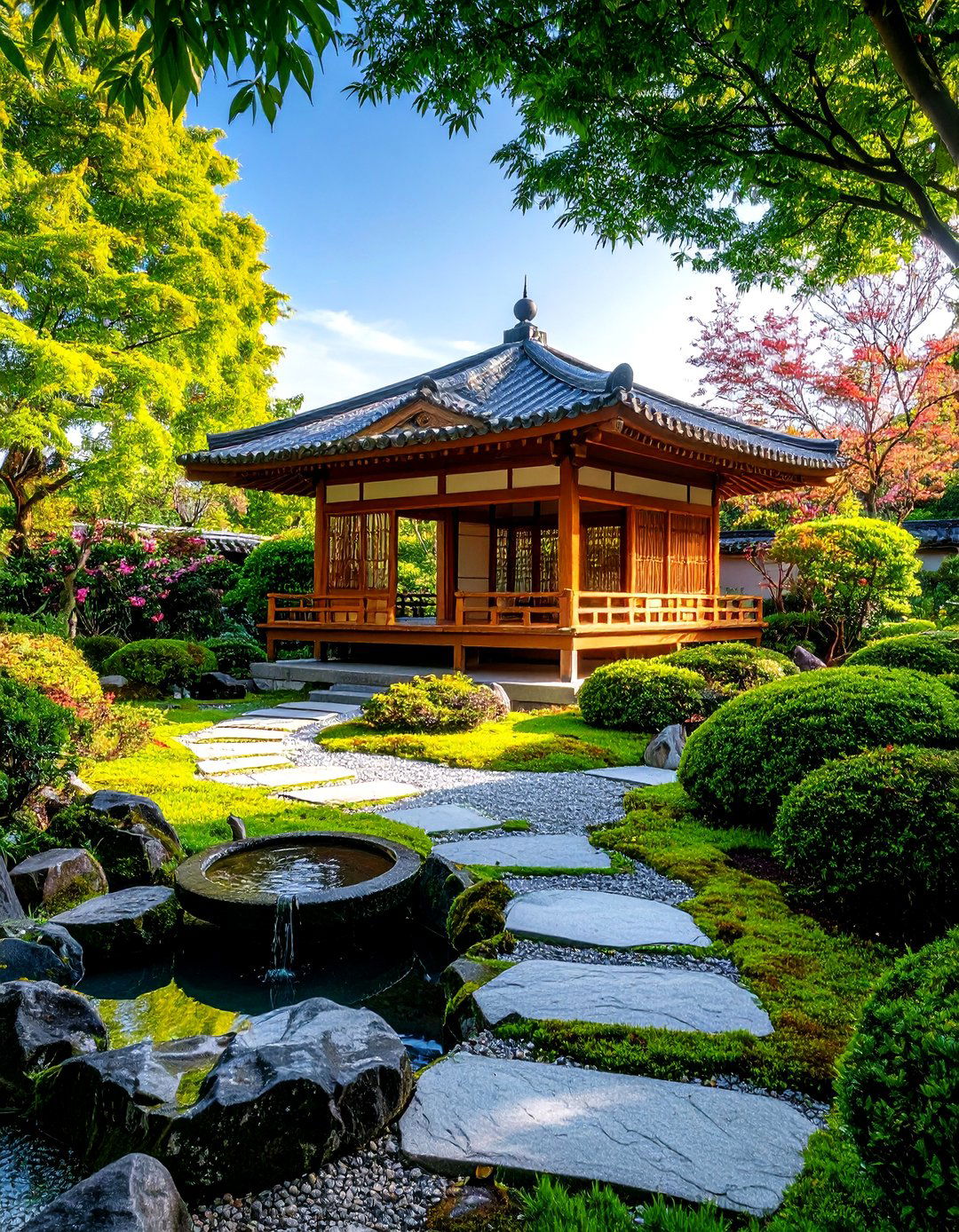
Traditional tea gardens represent the pinnacle of Asian landscaping design, creating intimate spaces specifically intended for contemplation and ceremony. The Japanese tea garden grew out of an esoteric ritual originated in China and was supposed to induce a suitable mood in the person approaching a teahouse to participate in the tea ceremony. Tea gardens represent Buddhist principles of harmony and simplicity, serving as a tranquil setting for meditation, personal reflection and appreciation for nature. Design your tea garden with an outer area connected by stepping stones to an inner sanctuary surrounding a small pavilion or seating area. The tea garden serves to disconnect those who enter it from worldly pomp and circumstance, to strip away cares and concerns, and to prepare them for the ritual of drinking tea with friends. Include elements like stone basins for purification, carefully pruned plants, and subtle lighting to create this transformative journey from everyday concerns to peaceful mindfulness.
8. Asian Landscaping Bonsai Display Garden Areas
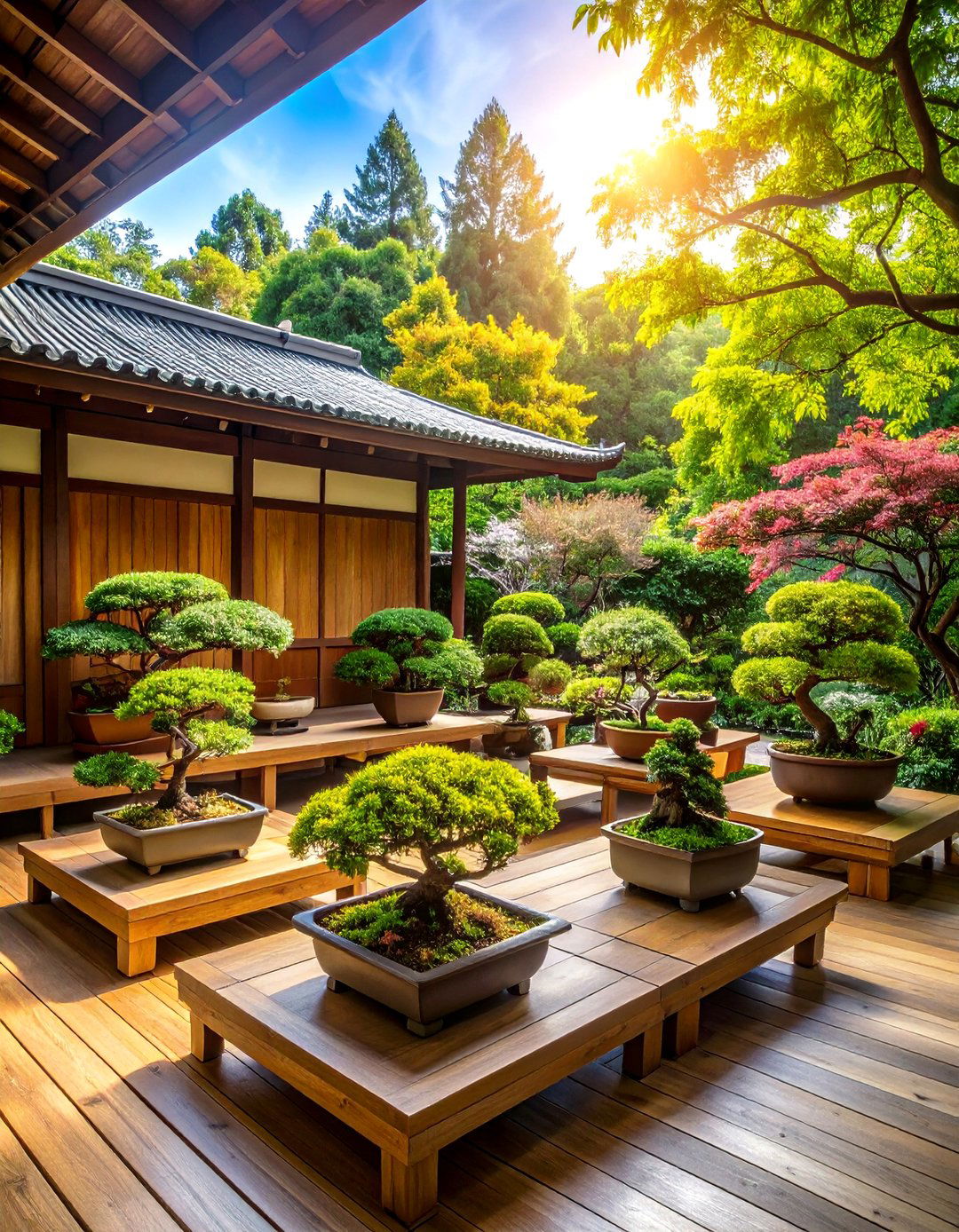
Dedicated bonsai display areas showcase the artful miniature tree cultivation that represents harmony between human creativity and natural beauty. The artful practice of bonsais in Feng Shui is not just about placing a tree; it's about cultivating an atmosphere where both you and your plant can flourish together. According to Feng Shui principles, placing your bonsai in the eastern or southeastern sector of your home can enhance the flow of positive energy, promoting growth and prosperity. Create raised platforms or benches at varying heights to display different bonsai specimens where they can be viewed from multiple angles. In general, a bonsai tree symbolizes harmony, balance, peace, and good luck. Consider seasonal rotation spaces and protection from harsh weather while maintaining optimal viewing positions. To reap maximum benefits, Feng Shui recommends the placement of bonsai trees in the south, east and south-east corners of any space.
9. Asian Landscaping Stone Bridge Garden Features
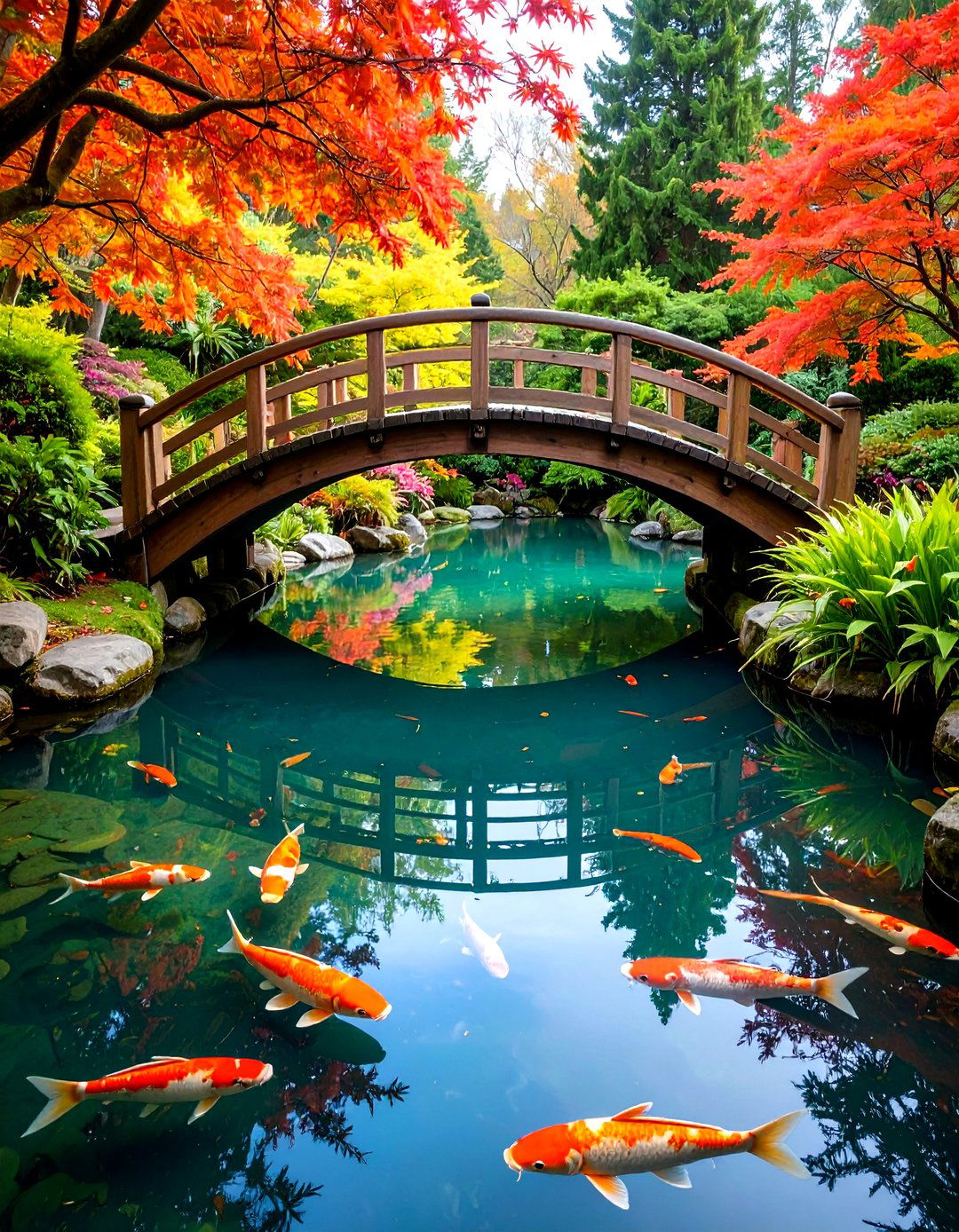
Graceful bridges serve both functional and symbolic purposes in Asian landscaping, representing the journey through life and connection between different garden spaces. This peaceful, high-arched pedestrian bridge spans calm waters, so its reflection creates the illusion of a full circle symbolic of the moon. Bridges are often featured in Asian style gardens, especially alongside a water feature, creating focal points that invite contemplation and exploration. Design bridges with gentle arcs using natural materials like wood or stone that complement your garden's overall aesthetic. Wooden bridge gives the Asian garden that timeless Japanese style and Oriental vibe, while stone bridges offer permanence and classical beauty. Position bridges to create views of different garden areas, encouraging visitors to pause and appreciate various perspectives. The reflection of an arched bridge in still water doubles its visual impact and creates powerful symbolic meaning representing wholeness and continuity.
10. Asian Landscaping Stepping Stone Pathway Creation

Thoughtfully designed stepping stone pathways guide visitors through Asian landscapes while encouraging mindful, deliberate movement and contemplation. Stepping stones and paving stones are placed buried in gravel and moss to indicate the way people walk. Creating tranquil stone pathways in zen gardens is essential for guiding visitors through a serene landscape using textured stones in natural colors, arranged irregularly to promote harmonious flow. Pathways represent the journey of life and exploration of nature, and are designed for mindful strolling and meditation. Space stones to encourage slow, measured steps that promote mindfulness and present-moment awareness. Choose materials that will contrast with the larger rocks and gravel, such as darker colored stepping stones. Vary stone shapes and sizes while maintaining consistent spacing, and partially embed them in moss, gravel, or groundcover to create the appearance of natural occurrence rather than artificial placement.
11. Asian Landscaping Water Wall and Fountain Design

Water walls and fountains introduce the peaceful sounds of flowing water that are essential to authentic Asian landscaping environments. A bamboo water wall creates gentle water soundscapes, while a pond adds reflective surfaces that invite contemplation. The sounds of moving water from waterfalls add to the soothing nature of Japanese gardens, with two waterfalls and ponds punctuating streams. Though water is not part of a traditional Zen garden, the sound of moving water can create a more soothing environment that is conducive to meditation. Install bamboo fountains or stone cascades that provide gentle trickling sounds without overwhelming the garden's tranquil atmosphere. Shishi-odoshi, the water-filled bamboo tube which clacks against a stone when emptied was made to enjoy the sound. Position water features where their sounds can mask urban noise while creating natural rhythms that enhance meditation and relaxation throughout your Asian landscaping design.
12. Asian Landscaping Feng Shui Energy Flow Design
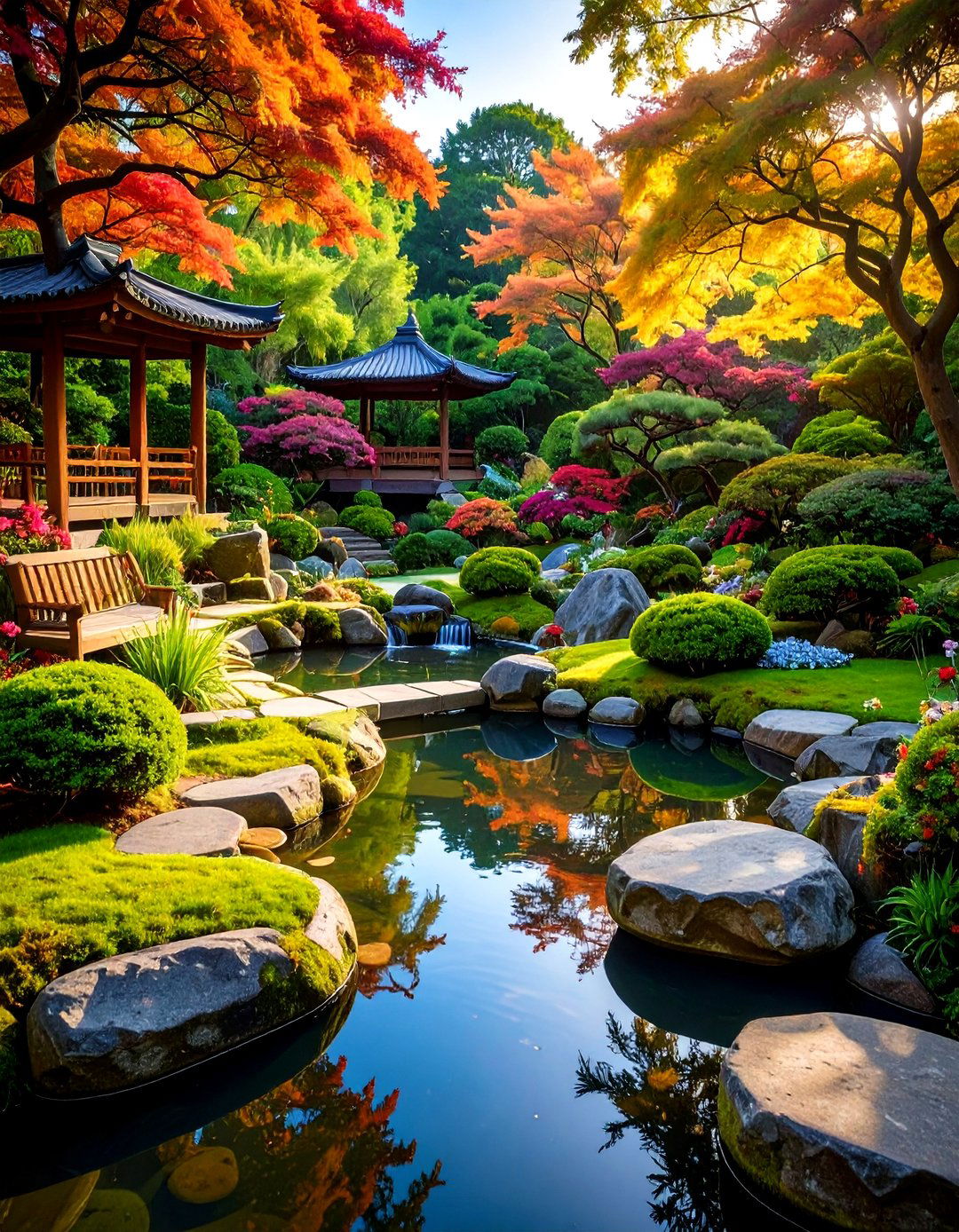
Implementing Feng Shui principles in your Asian landscaping creates harmonious energy flow that promotes prosperity, health, and spiritual well-being throughout your outdoor space. Feng Shui garden design focuses on balancing energy flow within your landscape by strategically placing elements like water features, rocks, and plants to create harmony and invite positive energy. Inspired by the philosophy of Feng Shui, gardens are meticulously designed to balance the elements of water, plants, stone, and architecture, creating spaces that exude peace and balance. This design approach often emphasizes curved pathways, open spaces, and natural materials. Creating balance is essential in Feng Shui, and this principle applies to landscaping placement as well, ensuring locations complement the overall balance of outdoor spaces. Design your garden with the five elements—wood, fire, earth, metal, and water—represented through appropriate plants, materials, and features. The five lobes are considered lucky in Asia because they are associated with the five feng shui elements.
13. Asian Landscaping Pagoda Architectural Element Integration
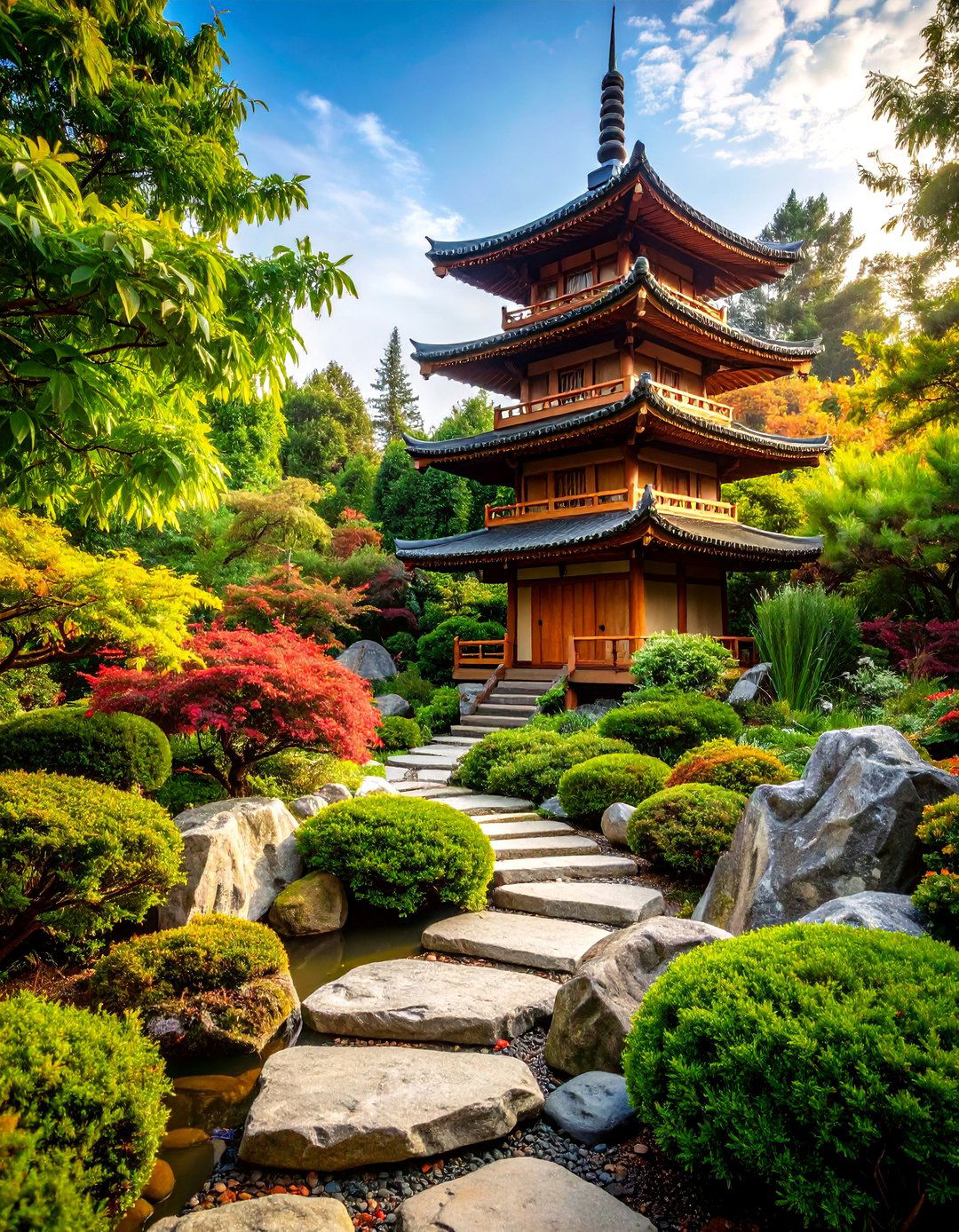
Pagoda structures add authentic architectural interest while serving as powerful focal points that embody the spiritual essence of Asian landscaping design. The five stories of this traditional Japanese wooden tower symbolize the elements of the universe: earth, fire, water, wind, and void. Use pagoda towers and other Asian sculptures sparingly, as softer and subtler Asian elements can set the scene without visually dominating the space. Position pagodas where they can be viewed from multiple vantage points while maintaining proportional scale with surrounding landscape elements. Low-maintenance Japanese garden design often relies on subtle differences in color and texture, with some echoing the pyramidal form of the pagoda while others frame the feature with their low, spreading branches. Whether incorporating traditional multi-story towers or simple pagoda-style lanterns, these architectural elements provide vertical interest and spiritual symbolism. Classic elements include pagodas, stone lanterns, stepping stone paths, native Japanese plants, serene koi ponds and zen gardens.
14. Asian Landscaping Meditation Retreat Space Design
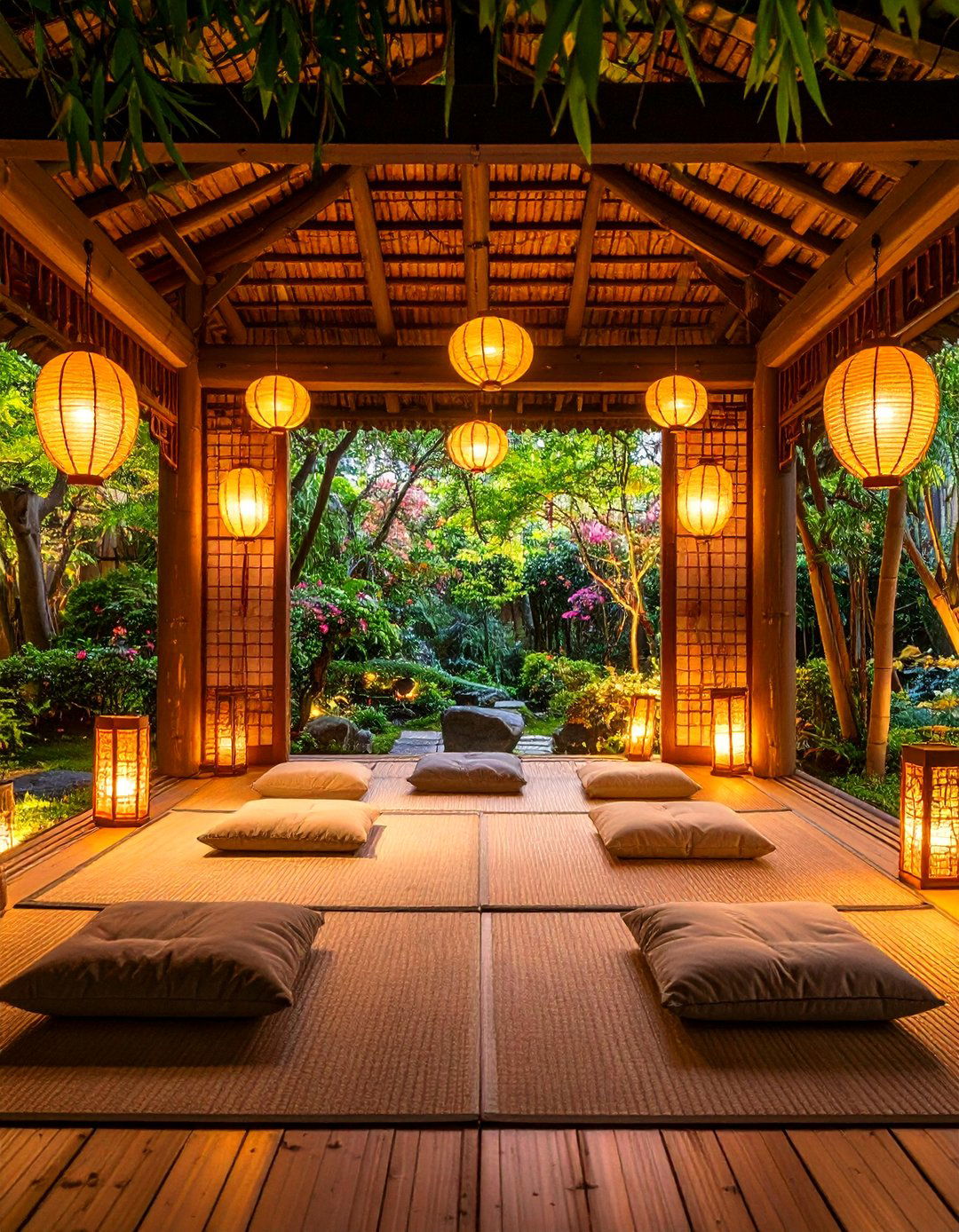
Dedicated meditation areas provide quiet sanctuaries within your Asian landscaping where contemplation and spiritual practice can flourish undisturbed by daily distractions. Create an intimate space in your Japanese garden with a teahouse or pavilion made of bamboo or wood for entertaining or viewing the serene landscape. Courtyards (yuan) in gardens contain small enclosed court courtyards, offering quiet and solitude for meditation, painting, drinking tea, or playing on the cithare. I love placing cozy cushions in intimate nooks, surrounded by natural materials like bamboo or wood. Design these spaces with comfortable seating, protective screening from wind and visual distractions, and carefully chosen elements that promote tranquility. Having a series of garden "rooms" can create ample opportunities for the calm contemplation the Asian garden is known for. Include subtle water sounds, fragrant plants, and soft lighting to enhance the meditative atmosphere while ensuring privacy and comfort for extended periods of peaceful reflection.
15. Asian Landscaping Rock Arrangement and Stone Groupings
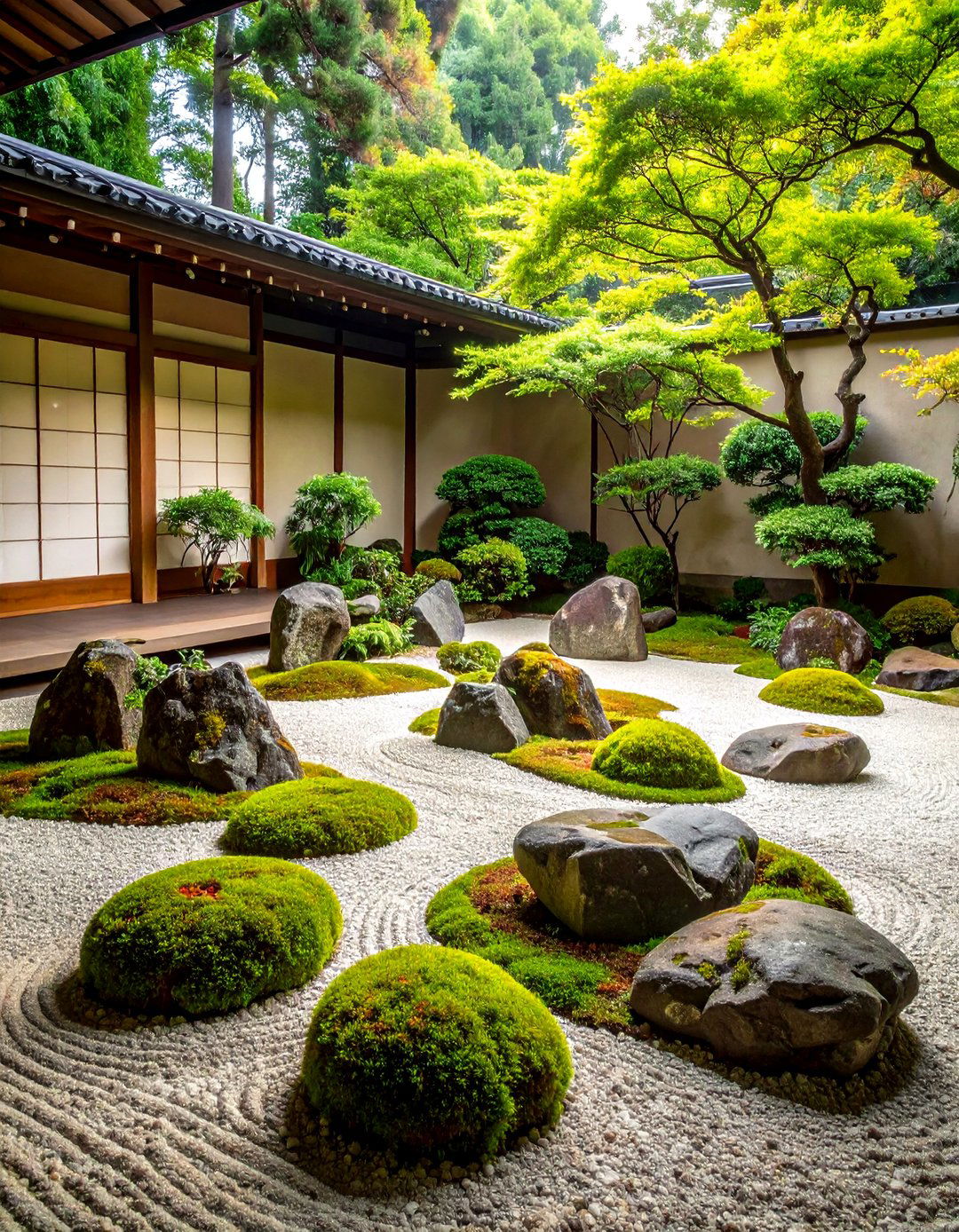
Strategic rock arrangements form the foundation of Asian landscaping design, creating powerful focal points that represent natural landscapes in miniature form. The first essential step in designing a Japanese garden is rock placement, as rocks—which are believed to contain spirits—are placed horizontally, with other elements such as moss, streams, or plants arranged around them. The rocks and stones compositions are maybe the most important elements used in Asian gardening, exuding power and stability combined with tranquility and timeless sensation. "Shichigosan stone arrangement" places stones in seven, five, and three groups and is considered as a good omen. Use materials that are in scale with the size of the garden room as well as the rest of your yard, as bigger stones can easily overwhelm a small space while small rocks can get lost in more sweeping landscapes. Choose stones with interesting textures, colors, and natural weathering patterns that suggest age and permanence within your Asian landscaping composition.
16. Asian Landscaping Ornamental Grass Feature Placement

Ornamental grasses provide graceful movement, seasonal interest, and textural contrast that enhances the natural beauty of Asian landscaping throughout the year. Papyrus, ornamental grasses, and groundcovers bring life to the stream edge, creating dynamic borders that soften hardscape elements. Shaded sections of Japanese gardens use subtle color contrast and bold textural differences to create interest, with variegated Hakone grass softening the edge of beds. Select grasses that complement your climate while providing year-round structure and seasonal changes in color and texture. Japanese bloodgrass, stone pagoda lanterns, and moss-covered rocks surrounding ponds create elements that blend and add up to a distinctly Asian style. Position ornamental grasses where they can catch breezes and create gentle movement, along water features where they provide natural transitions, or as backdrop plantings that frame more prominent garden features. Their graceful forms and subtle colors maintain the serene aesthetic while adding life and seasonal interest to static landscape elements.
17. Asian Landscaping Cherry Blossom Tree Feature Design
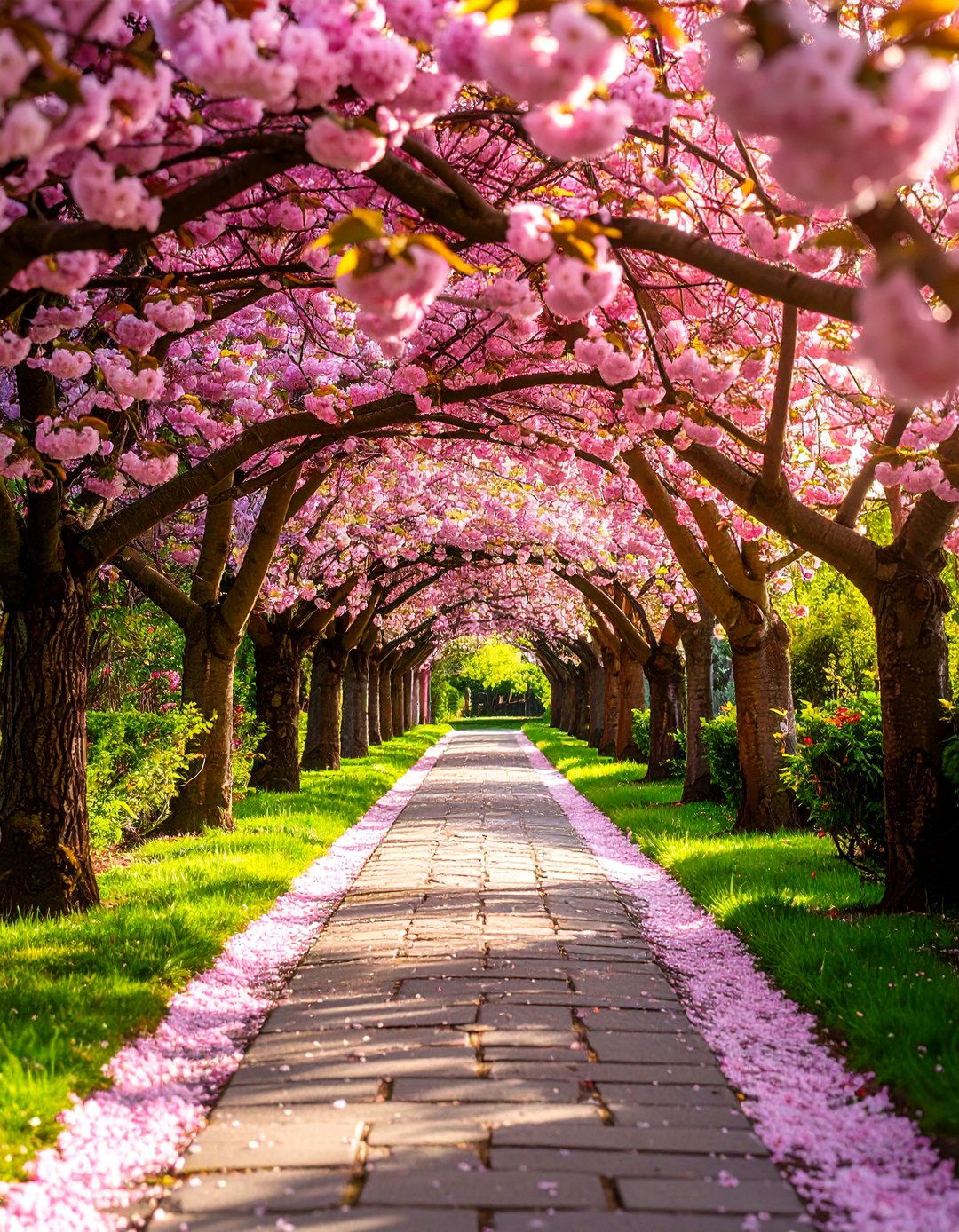
Cherry blossom trees serve as quintessential symbols of Asian landscaping, providing spectacular seasonal displays that celebrate the fleeting beauty of nature. Cherry blossom trees bloom throughout the garden in March and April, creating memorable experiences that connect visitors with traditional Asian appreciation for ephemeral beauty. Whether it's the delicate elegance of cherry blossoms, the tranquil flow of koi ponds, or the structured artistry of bonsai gardens, Asian landscaping ideas offer a perfect fusion of aesthetics and mindfulness. Position cherry trees where their spring blooms can be viewed from indoor spaces as well as garden pathways, creating living artwork that changes throughout seasons. Consider both the dramatic flowering period and the tree's form during dormant months when selecting placement locations. These typically include miniature landscape scenes, statuary, and small water features with carefully chosen plants that are shade-tolerant and meticulously pruned. The symbolic significance of cherry blossoms in Asian culture adds profound meaning to your landscaping while providing practical benefits through shade and seasonal interest.
18. Asian Landscaping Gravel and Sand Garden Pattern Design
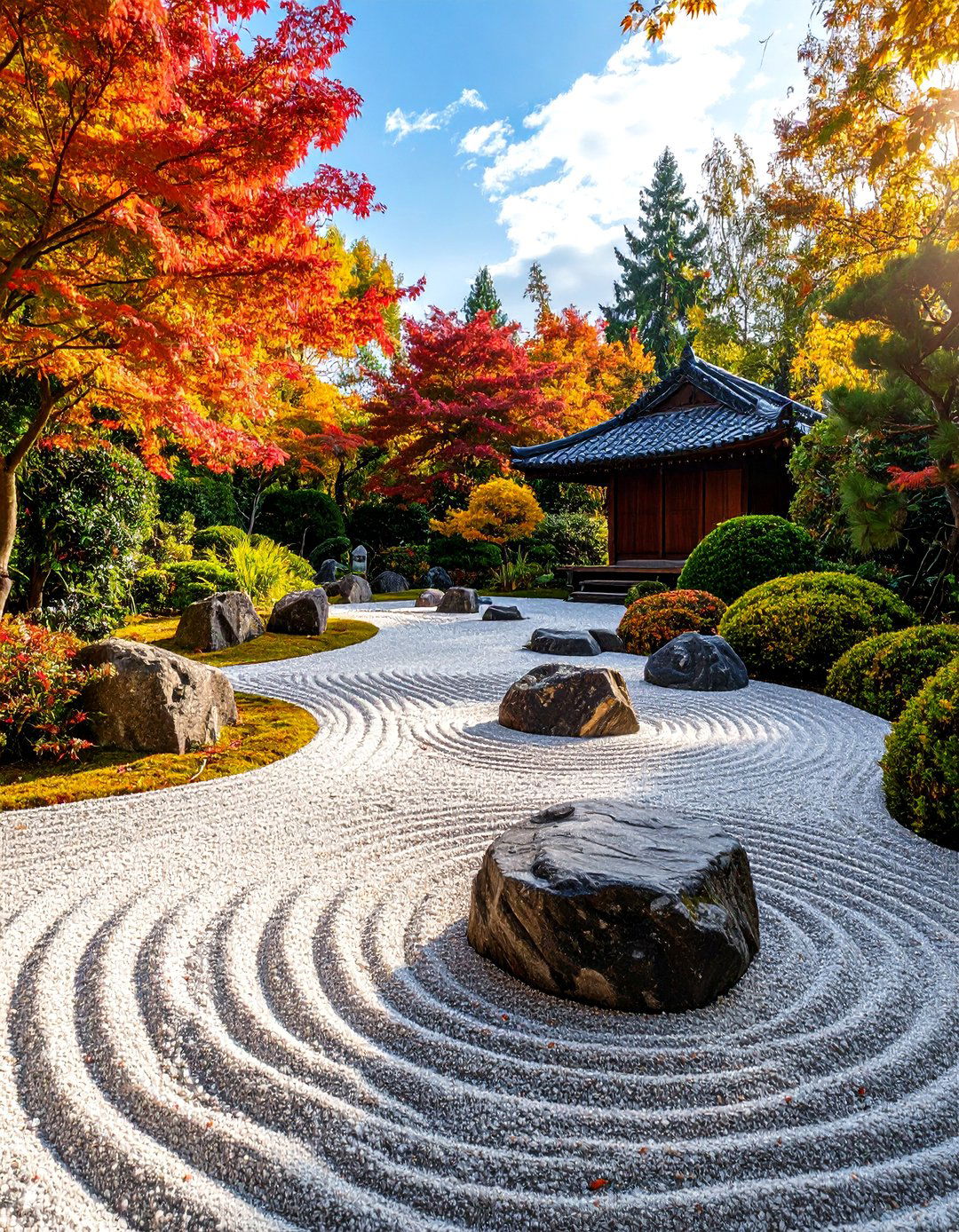
Carefully raked gravel and sand patterns create meditative surfaces that symbolize water while requiring minimal maintenance in Asian landscaping designs. In the stylized landscape composition of Zen gardens, water premises like seas and rivers are represented through spaces of waved gravel with carefully formed shallow furrows and patterns that symbolize waves and movement. These generally incorporate large rocks with either a real waterfall or a representation of a waterfall by using gravel or sand to represent water, with rocks representing countries and sand or gravel representing water flowing around it. Lines around larger rocks simulate water ripples, while wavy lines are reminiscent of a meandering stream, and straight line designs can invoke serenity. Most commonly used are crushed white or beige granite which is carefully shaped with specially designed rakes. Regular raking maintains the patterns while providing opportunities for meditation and mindful maintenance practices that connect you directly with your garden's spiritual dimensions.
19. Asian Landscaping Courtyard Garden Enclosed Design
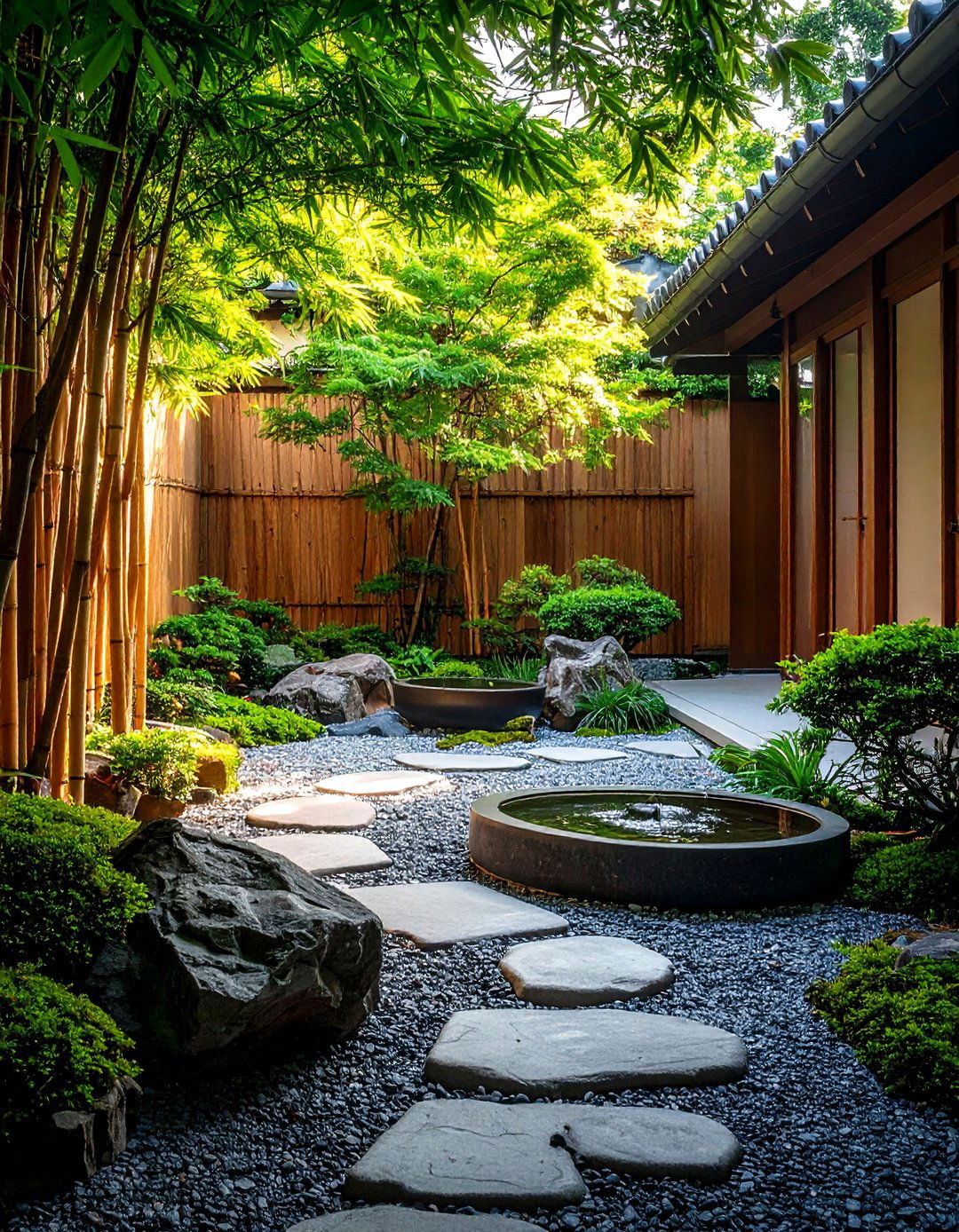
Intimate courtyard gardens create private sanctuaries within larger landscapes, offering secluded spaces for contemplation and cultural expression in authentic Asian style. This compact private garden, found adjacent to Japanese homes, is designed to be viewed from indoor vantage points with small Japanese courtyards often having windows or sliding glass doors to connect the inside to the outdoors. To create a secluded garden room, enclose the area with a wall, fencing, bamboo screening, lattice panels or formal hedging. Small meditation courtyards with Asian style and minimal Asian rock gardens with a dash of greenery create elegant small Asian style garden and courtyard designs. Due to limited sunlight and space, plants are shade-tolerant and meticulously pruned to prevent them from becoming overgrown. Design these intimate spaces with carefully chosen elements like small water features, select plantings, and artistic stone arrangements that can be appreciated from close viewing distances while maintaining the peaceful, enclosed atmosphere essential to Asian courtyard traditions.
20. Asian Landscaping Moon Viewing Deck Platform Design
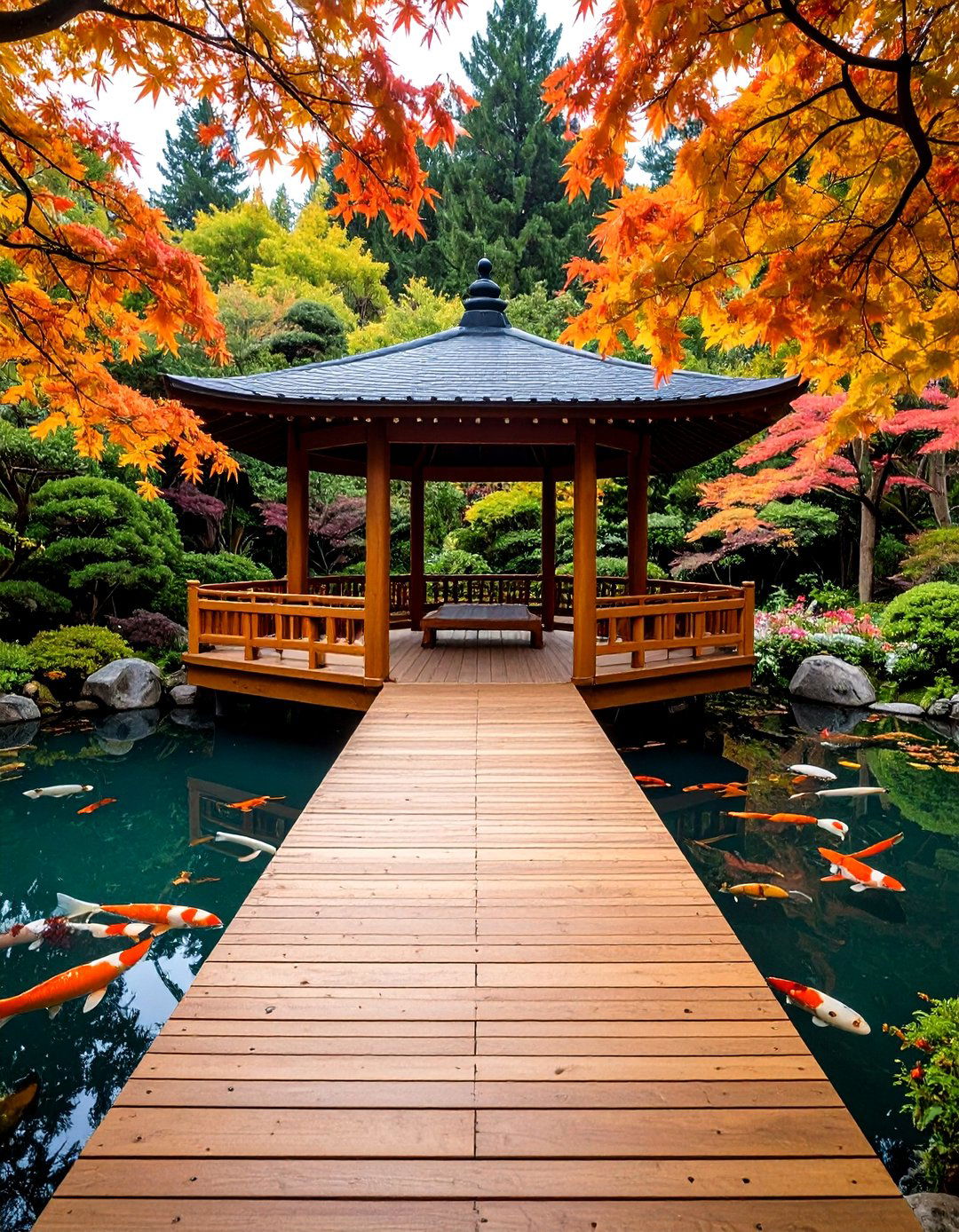
Moon viewing decks provide elevated platforms specifically designed for contemplating celestial beauty while embodying the Asian tradition of connecting with natural cycles. The Moon Viewing Deck resembles the main feature of the Silver Pavilion Garden in Kyoto, with the flat cone symbolic of Mount Fuji, with its summit hidden in the clouds. The Pavilion, perched above a koi pond and surrounded by Japanese maples, magnolias, and bamboo, features a panoramic view with four covered structures. Position these elevated platforms where they offer unobstructed views of the sky while maintaining visual connection to key garden elements below. Elements include covered outdoor lounge rooms, sun decks, rock gardens, shade gardens, evergreen plant screens, and raised boardwalks to connect various outdoor spaces. Construct moon viewing areas using natural materials that weather gracefully while providing comfortable seating for extended periods of contemplation. This peaceful, high-arched pedestrian bridge spans calm waters, so its reflection creates the illusion of a full circle symbolic of the moon.
Conclusion:
Asian landscaping transforms ordinary outdoor spaces into extraordinary sanctuaries that nurture both spirit and senses through timeless design principles. These elements combine to craft spaces that feel both peaceful and rejuvenating, bringing together natural beauty and thoughtful design that inspires relaxation and connection with nature. Whether incorporating a single element like a bamboo screen or creating a comprehensive design with multiple features, each component contributes to an overall atmosphere of harmony and tranquility. The Asian landscape creates a meditative feeling of serenity where stone and natural elements invite contemplation, while carefully-shaped plantings show our human interaction with the land. These twenty ideas provide the foundation for creating your own peaceful retreat that honors centuries of wisdom while meeting contemporary lifestyle needs.


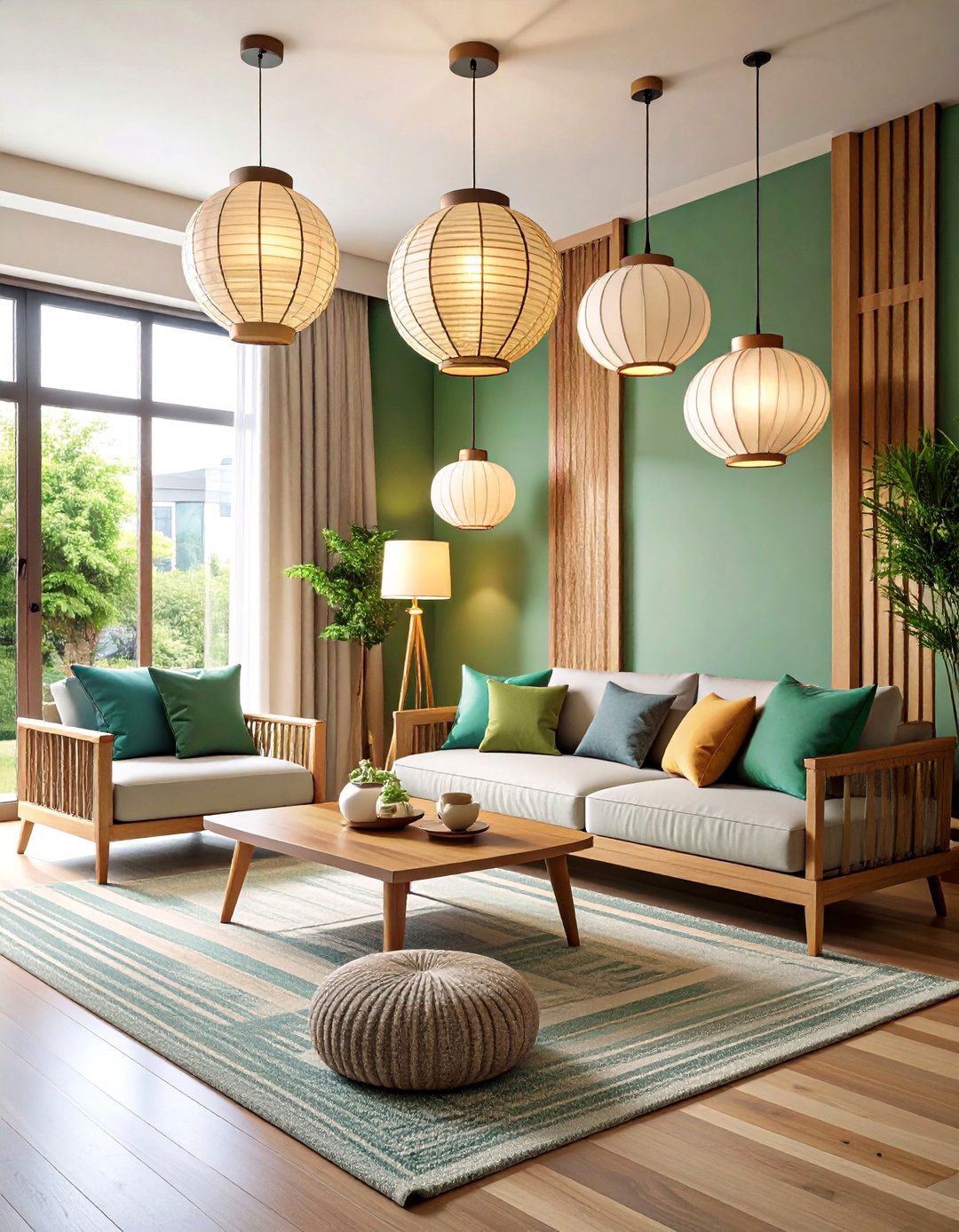


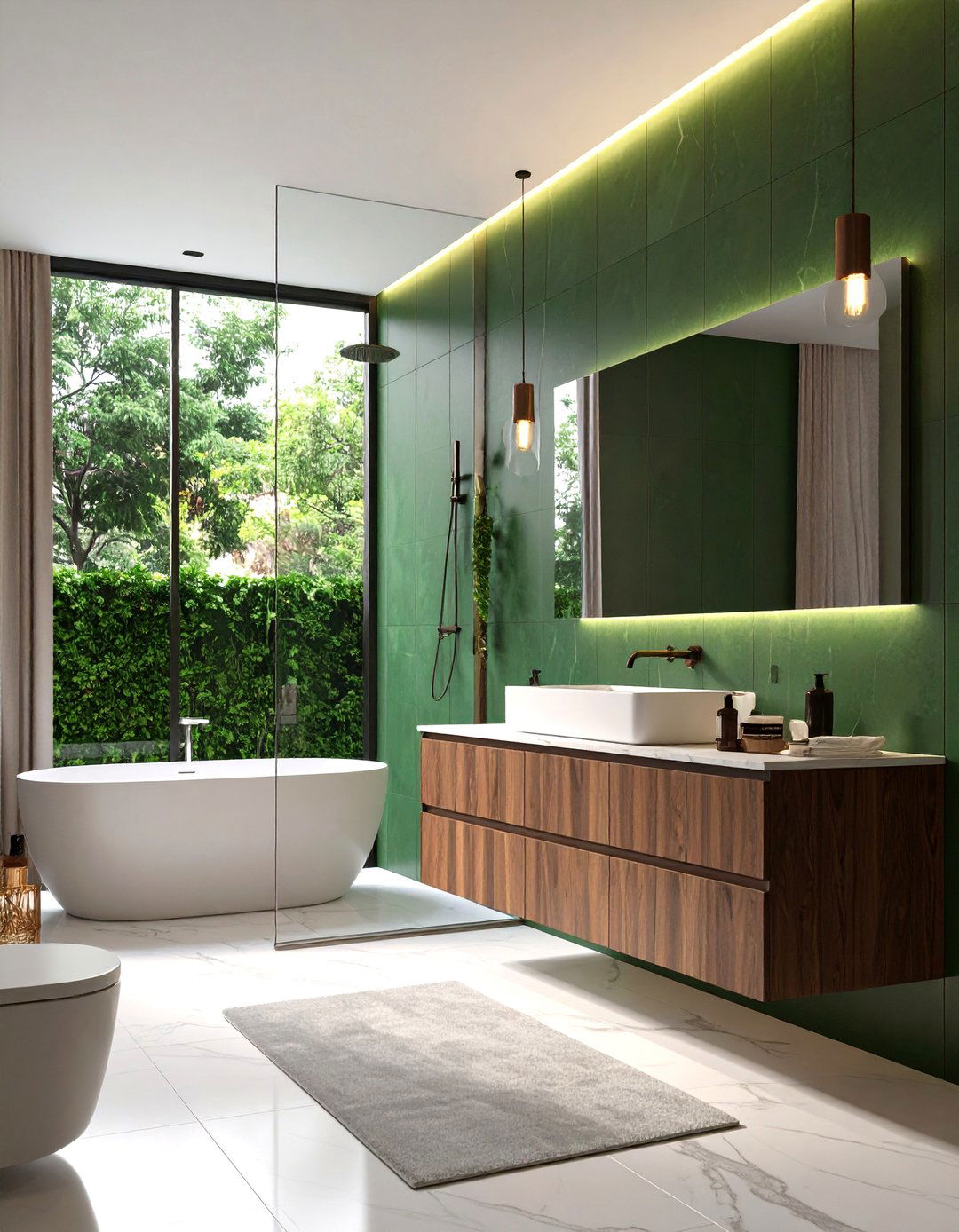
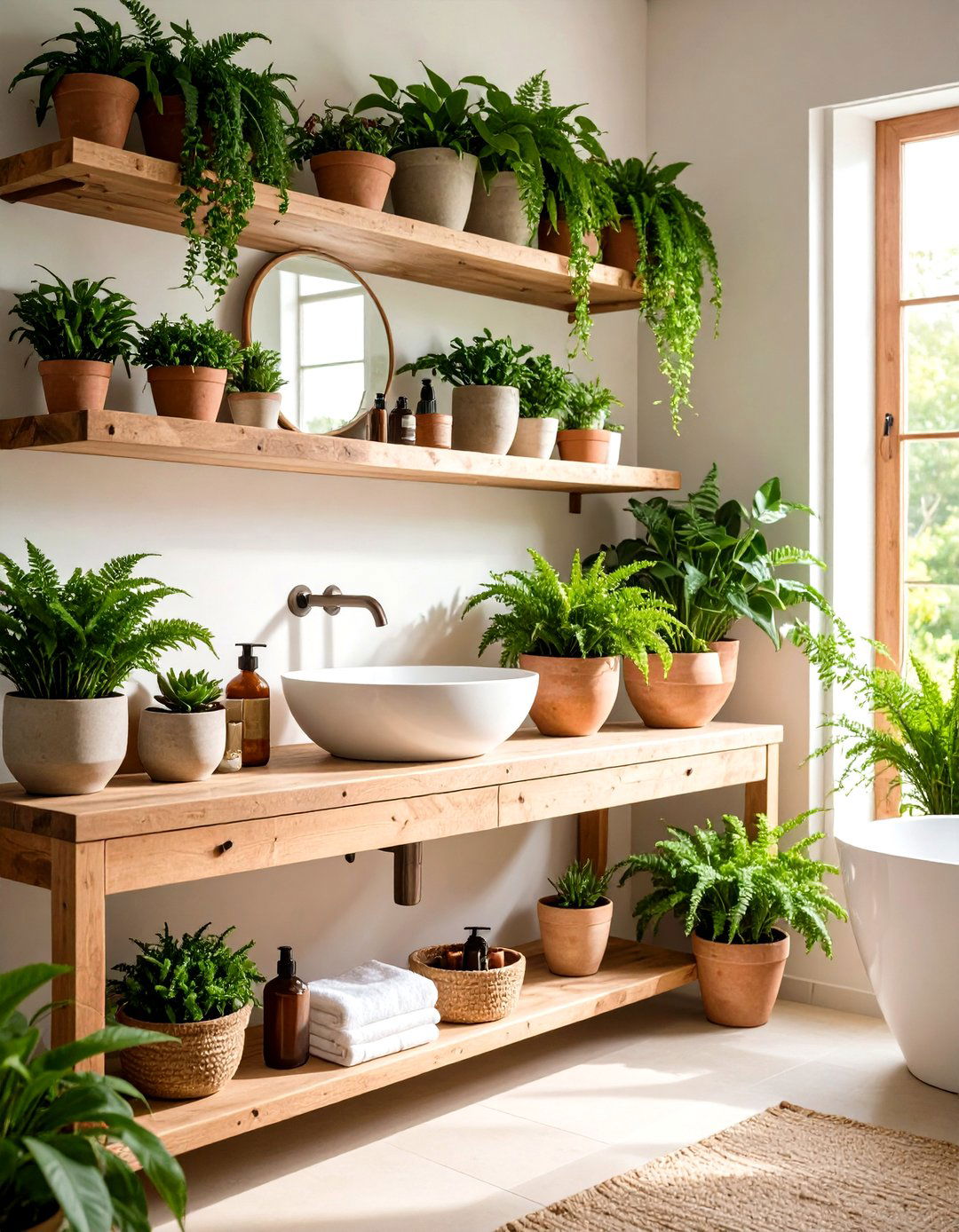
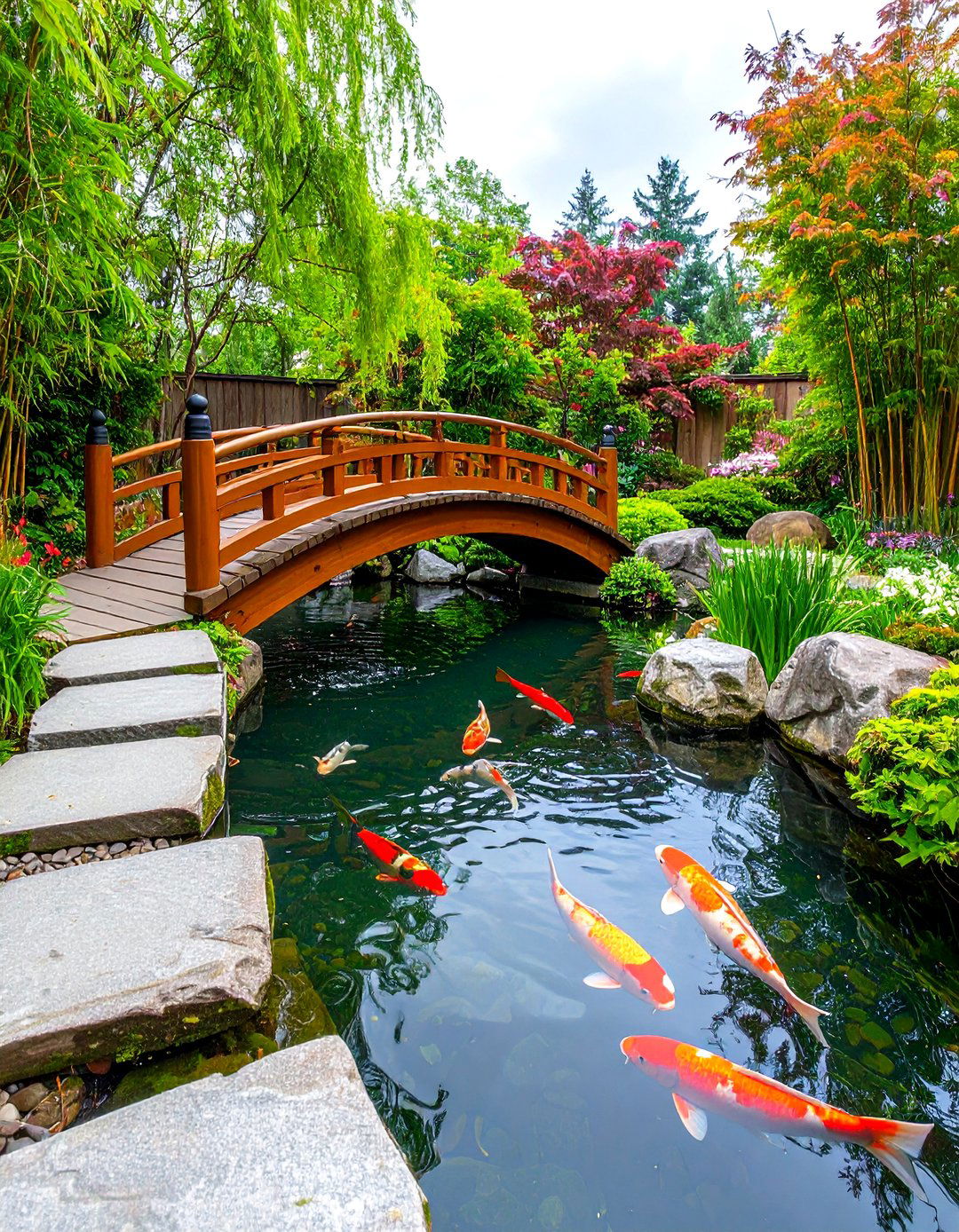
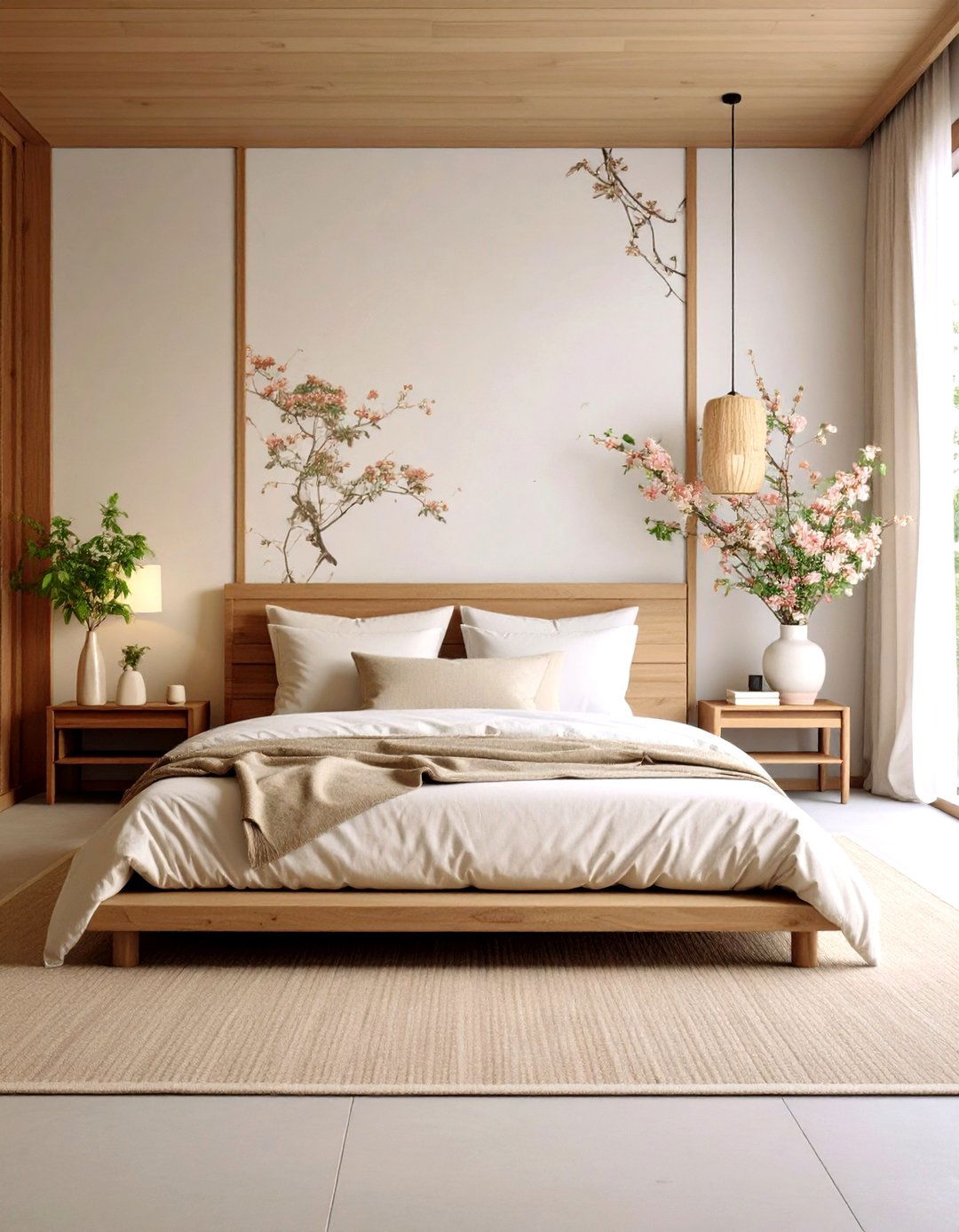
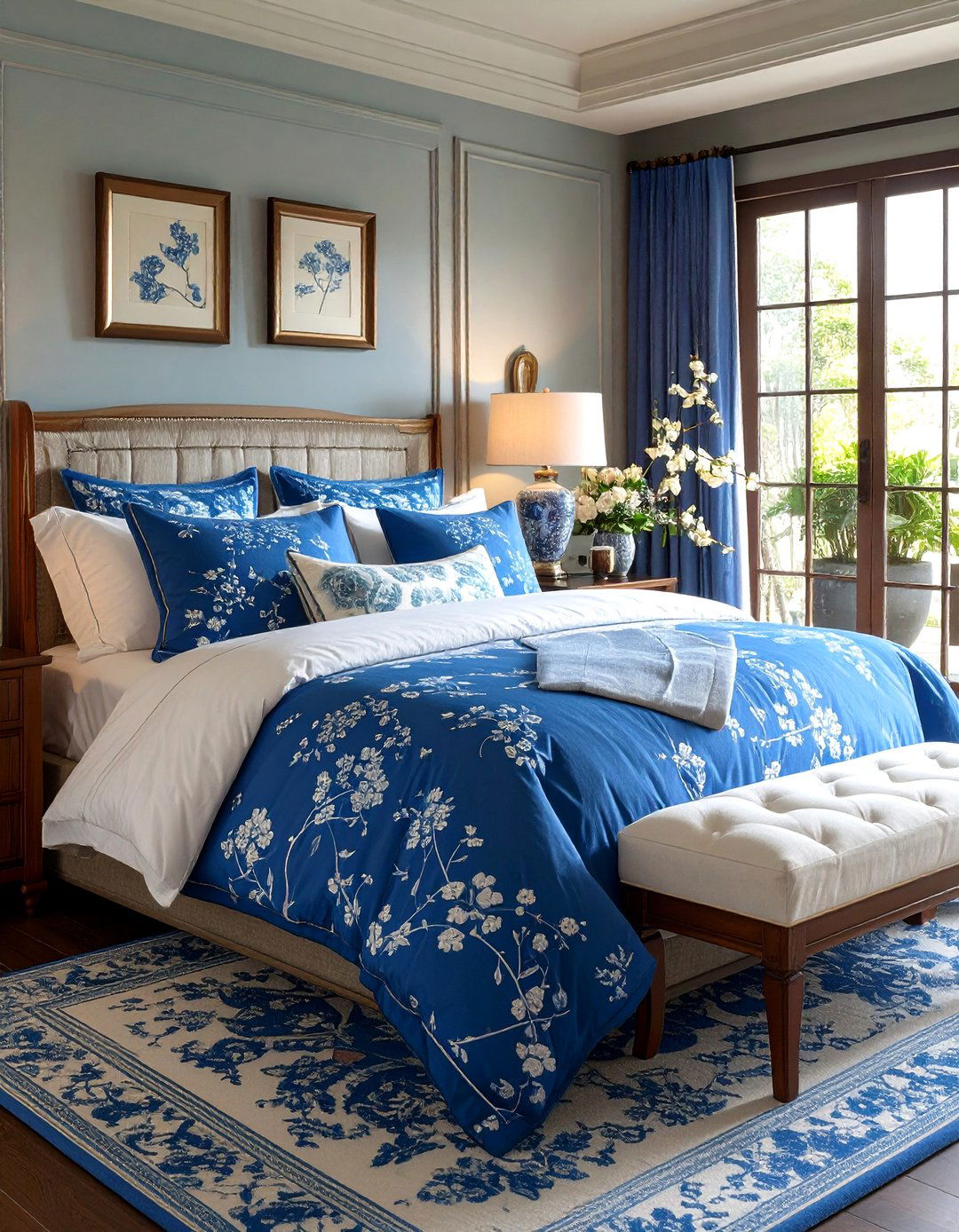
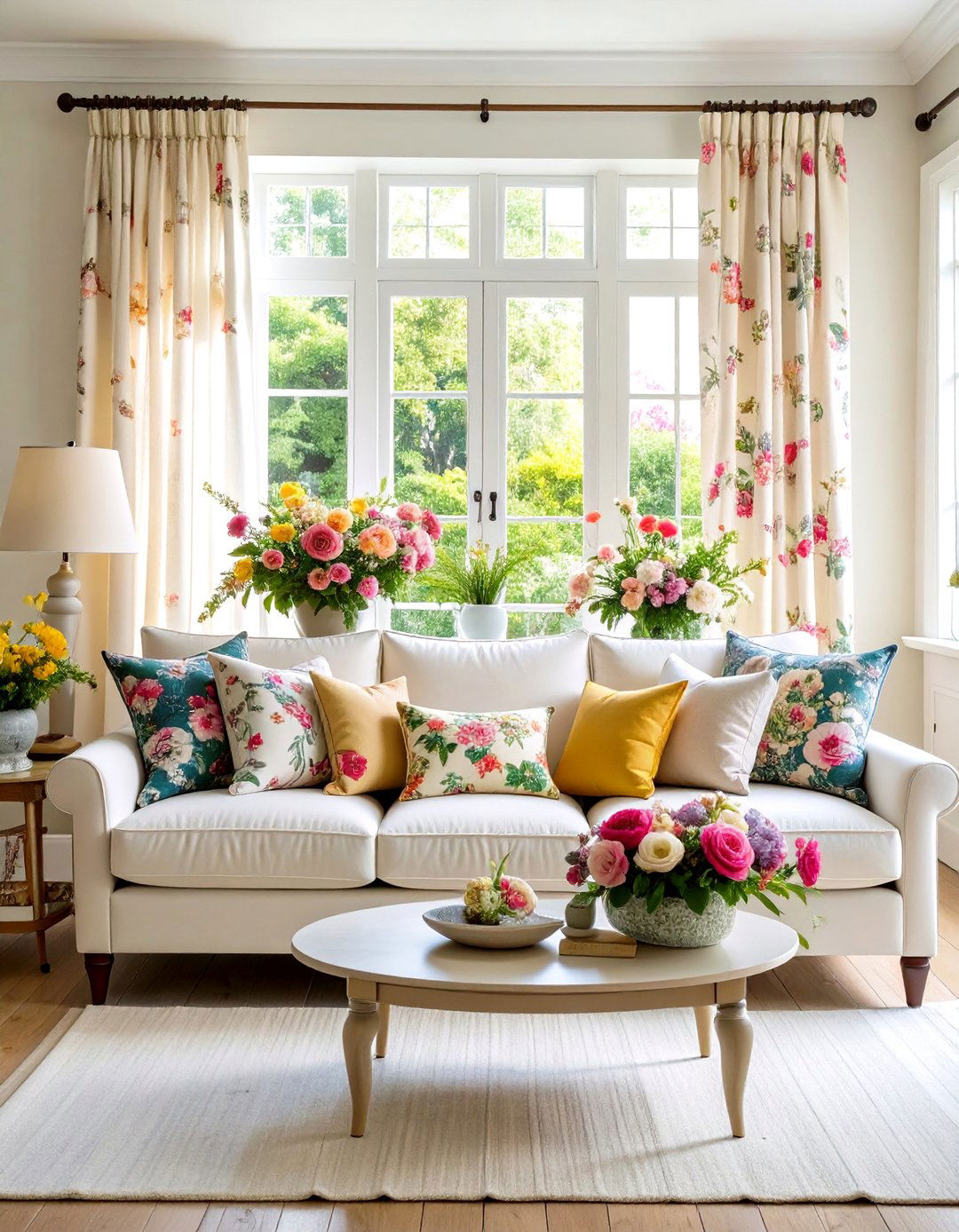
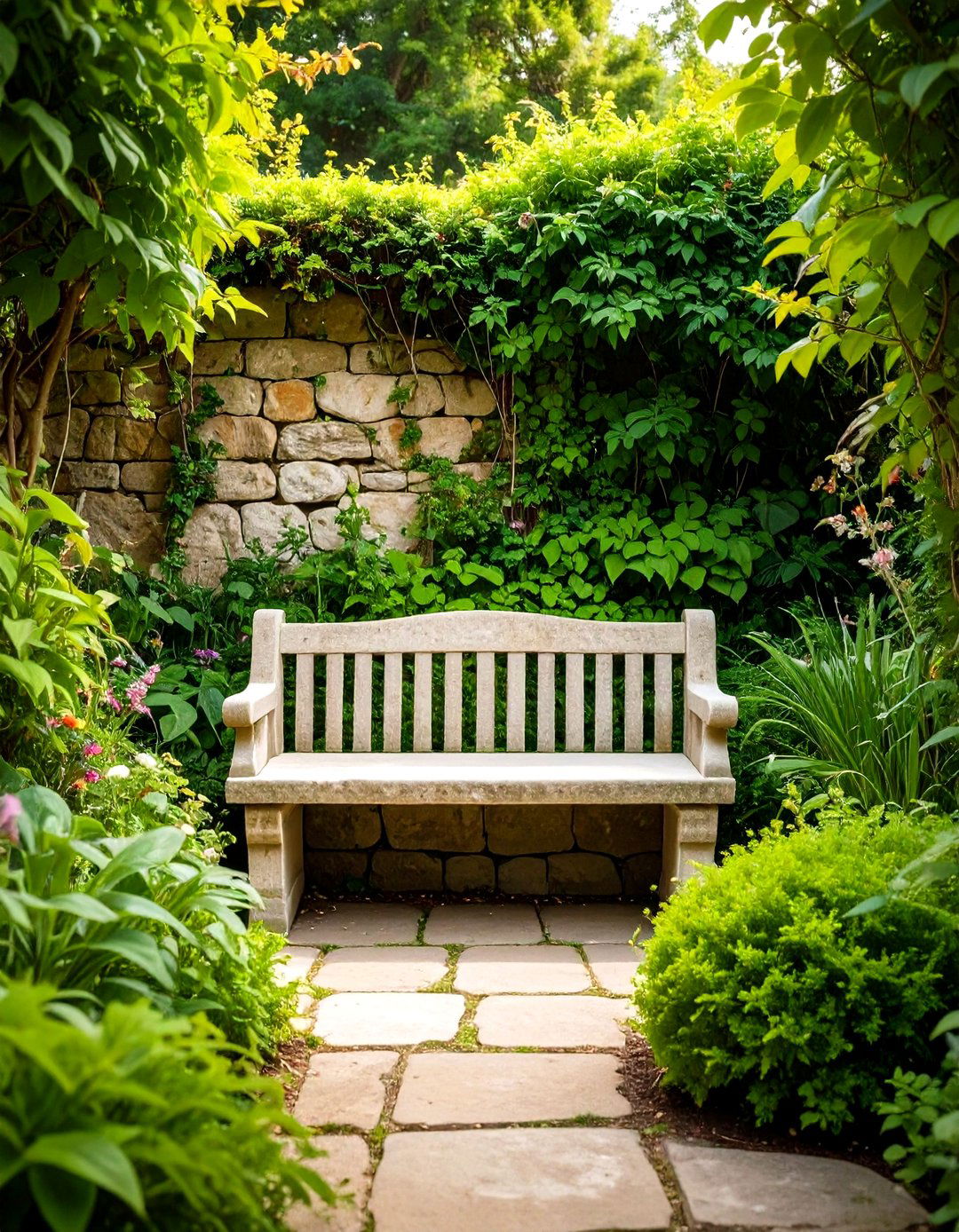
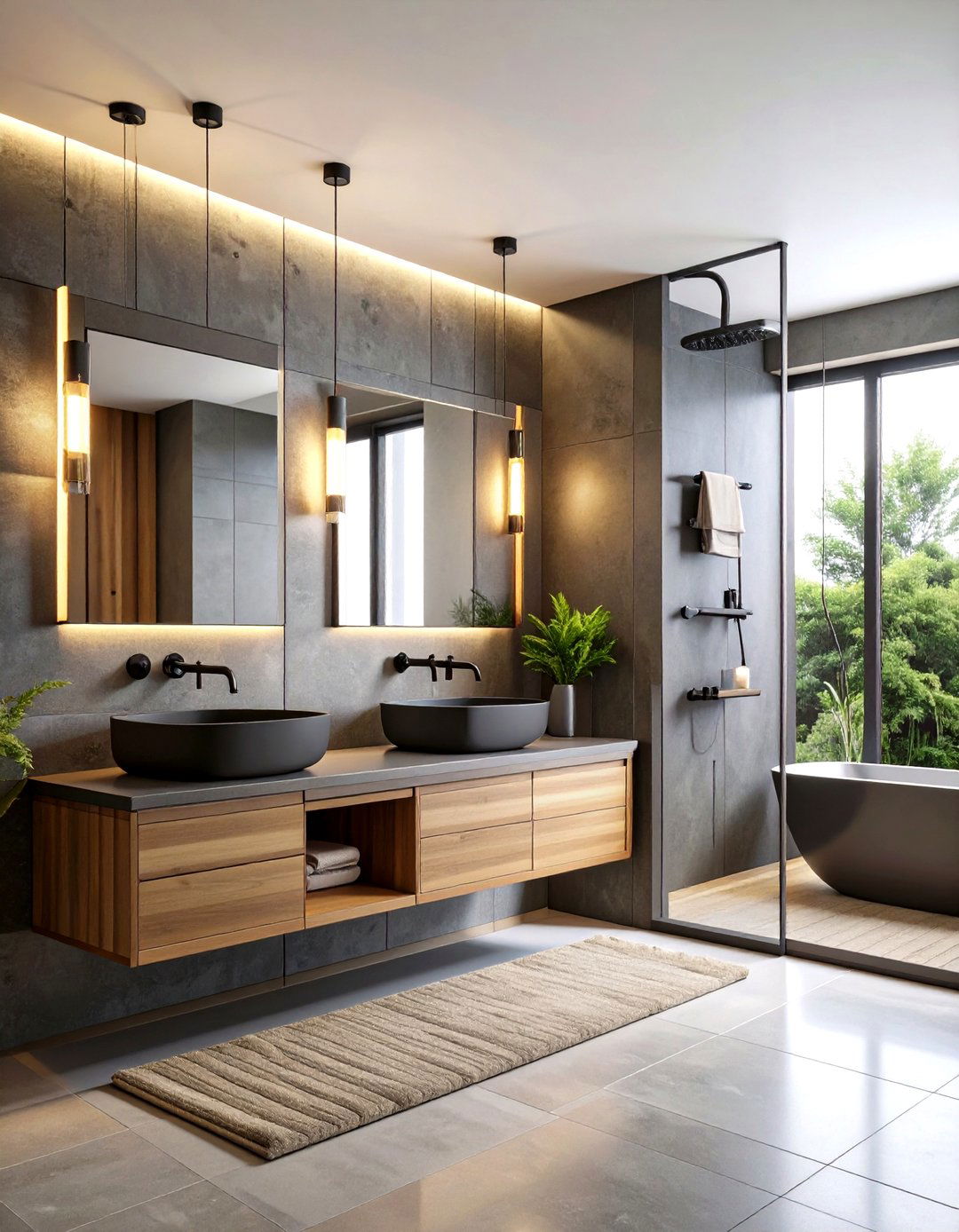
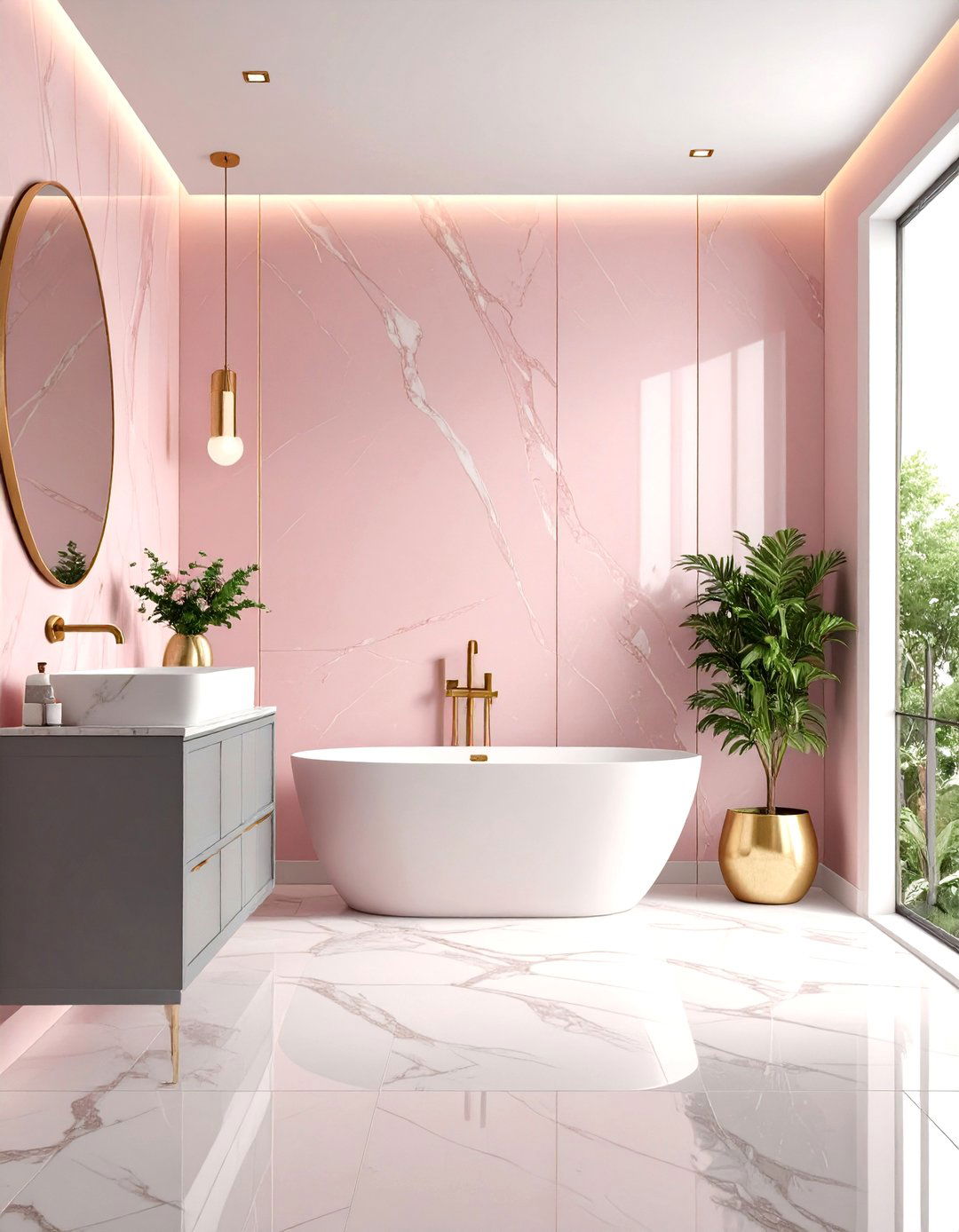
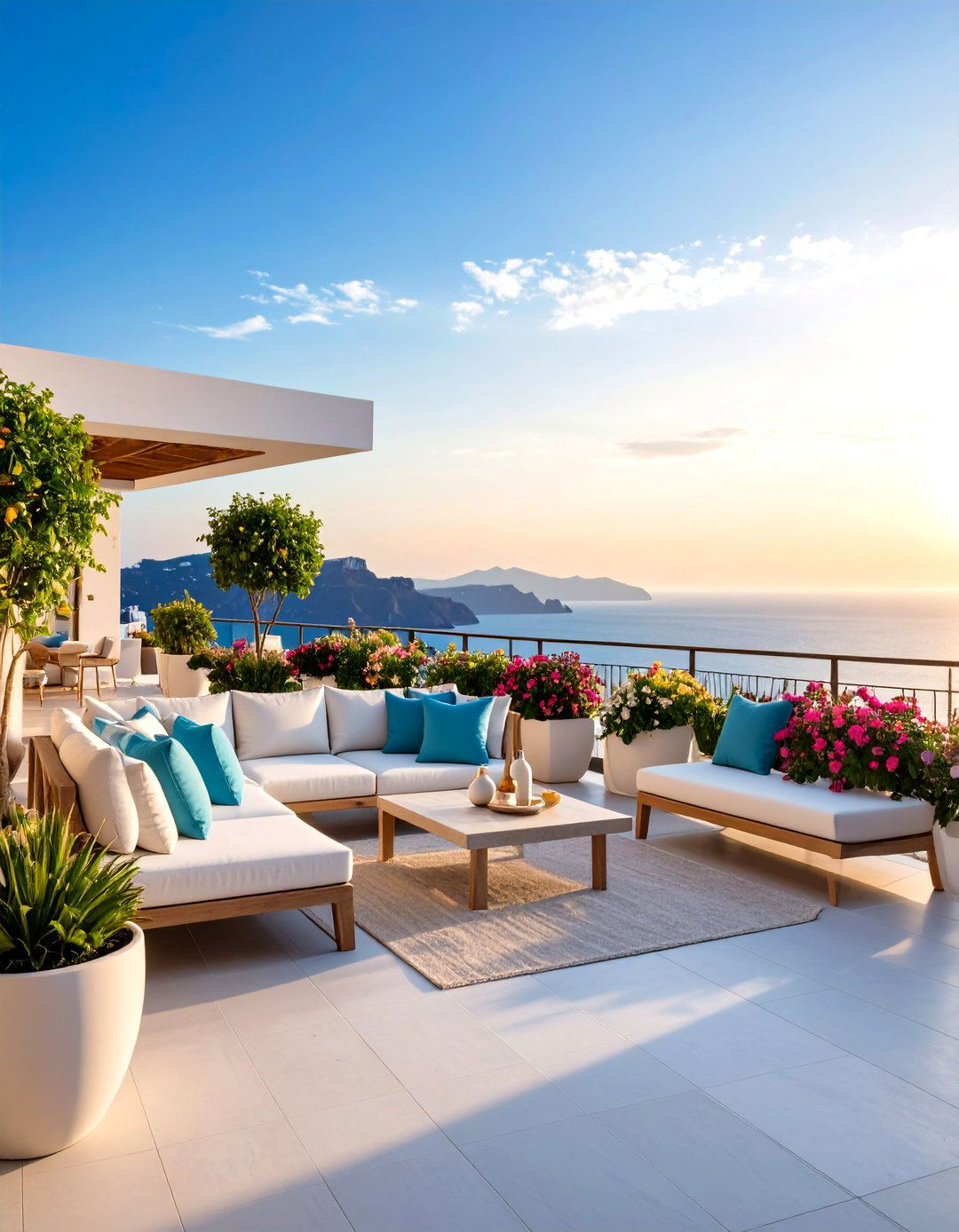
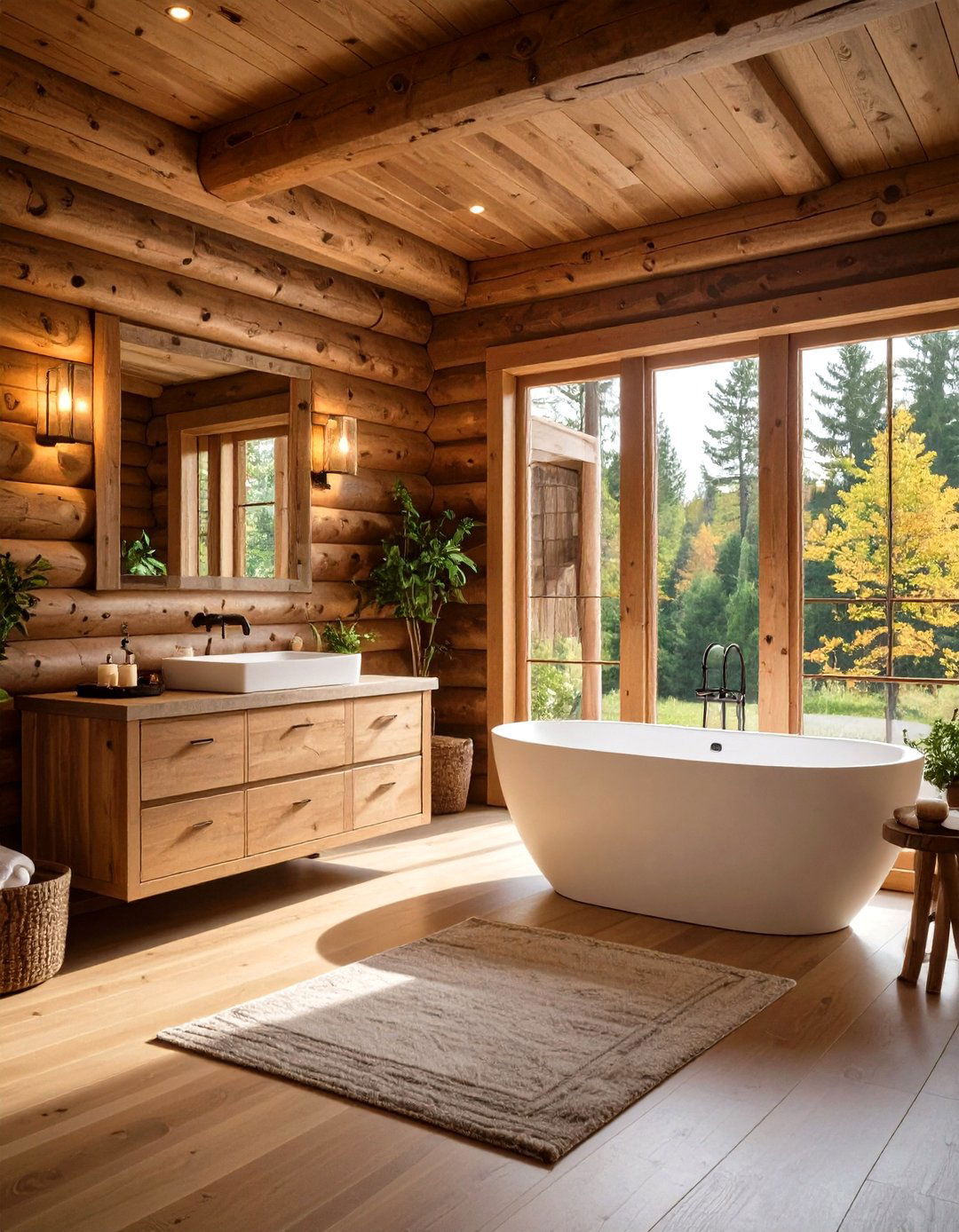
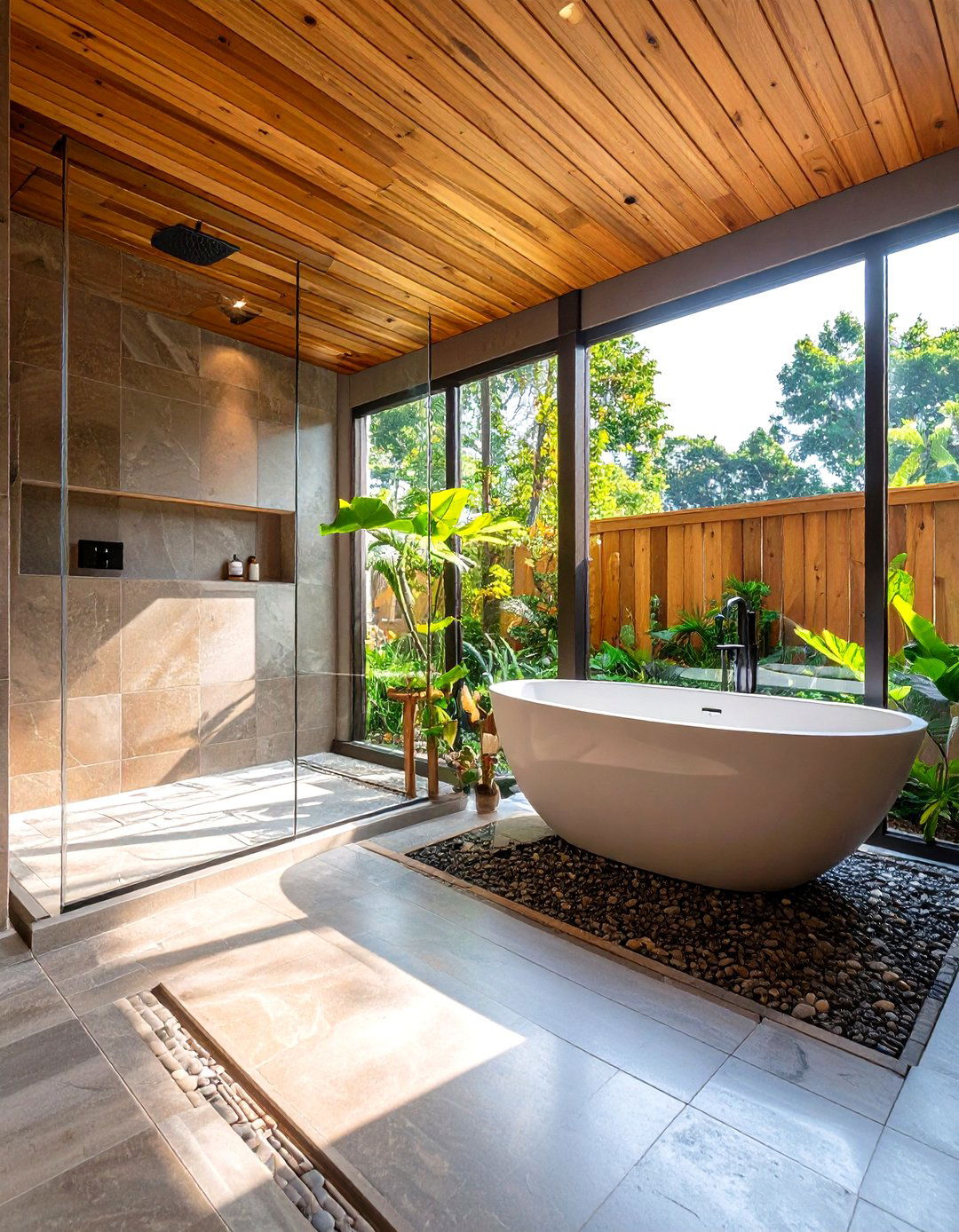
Leave a Reply